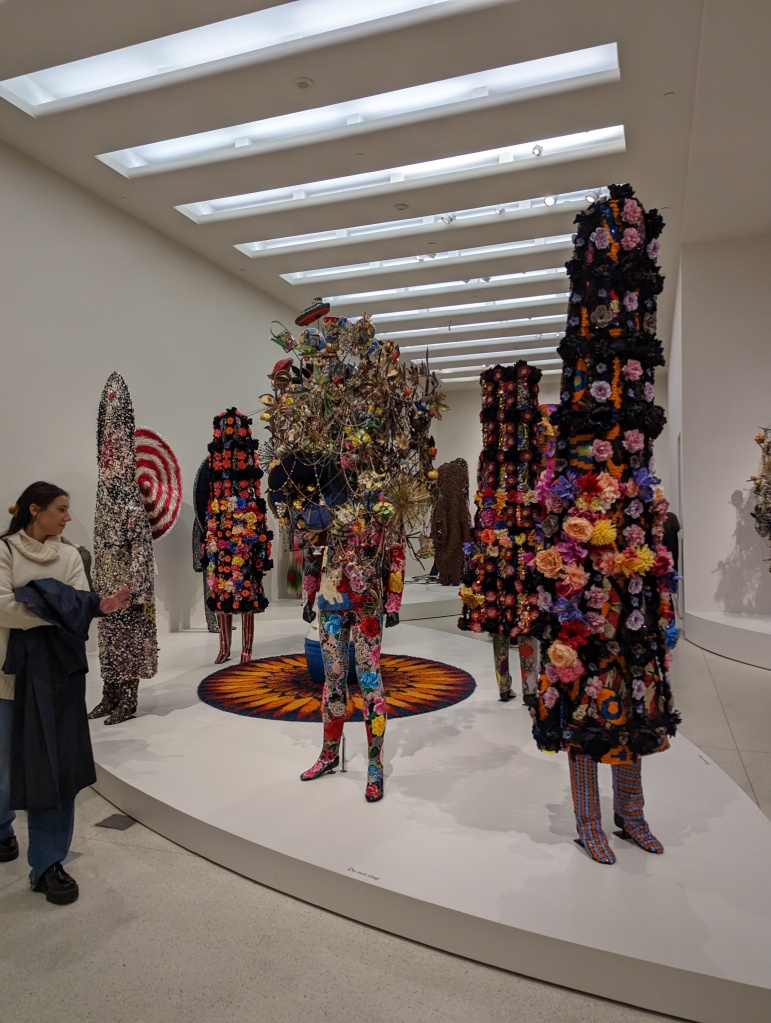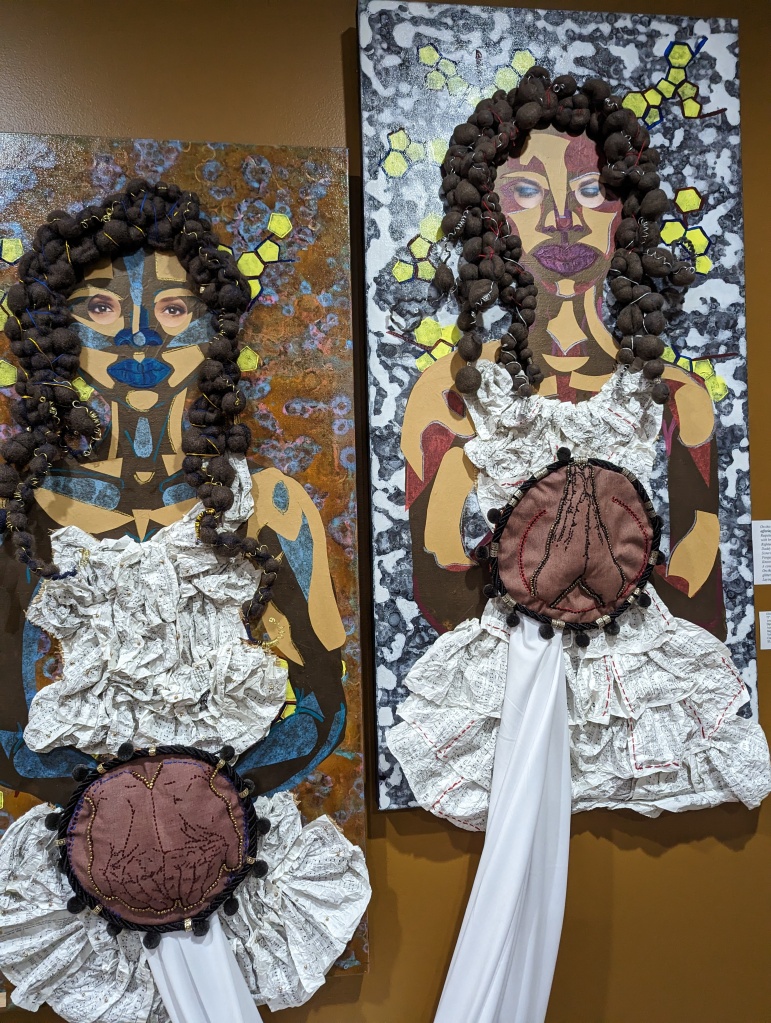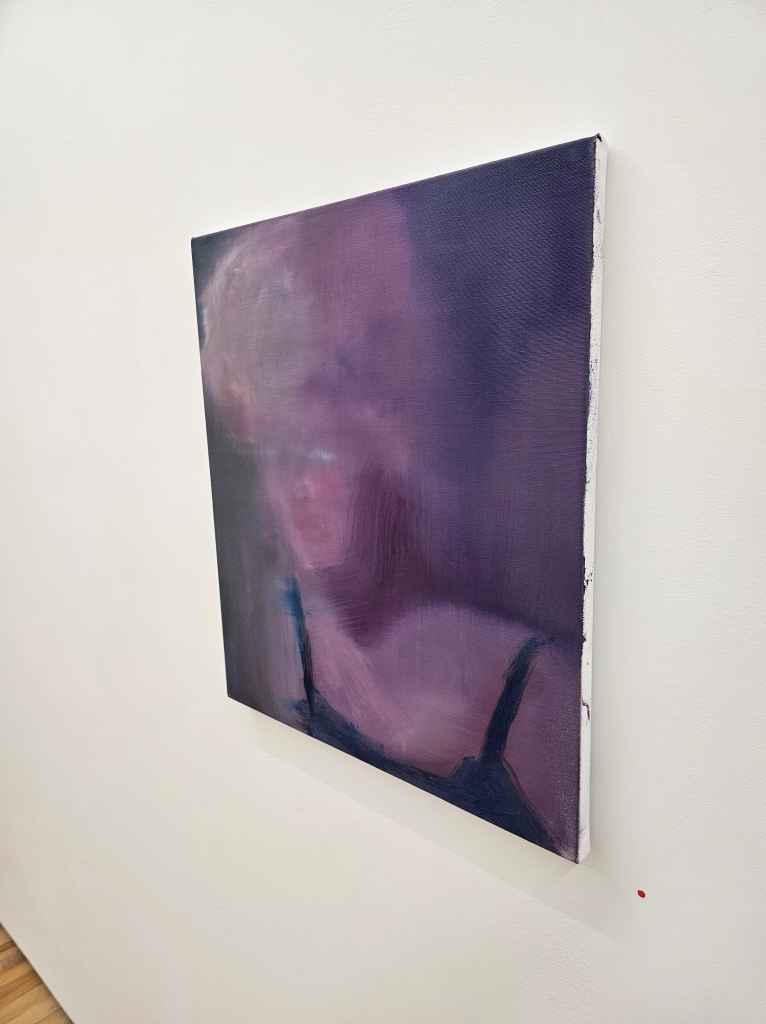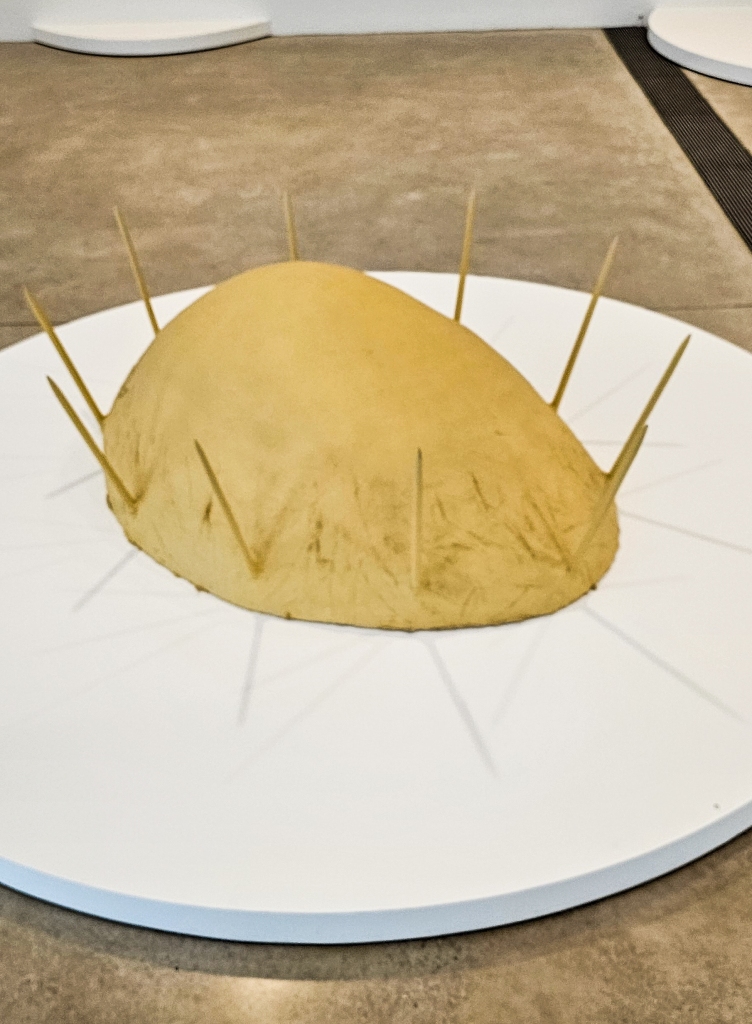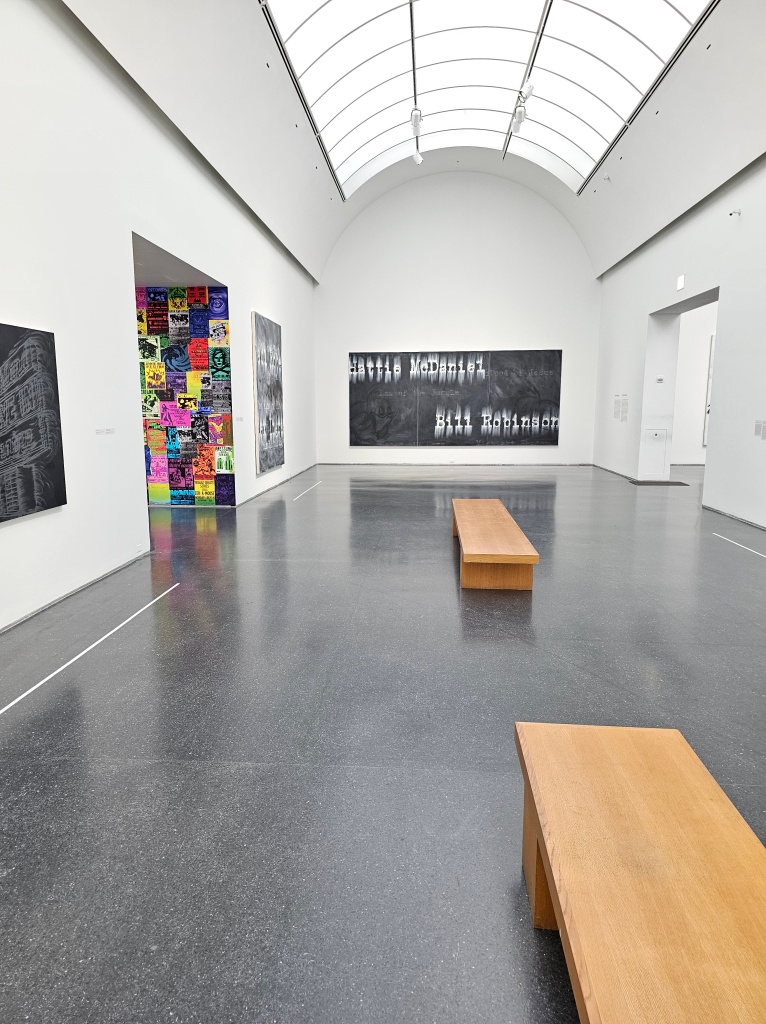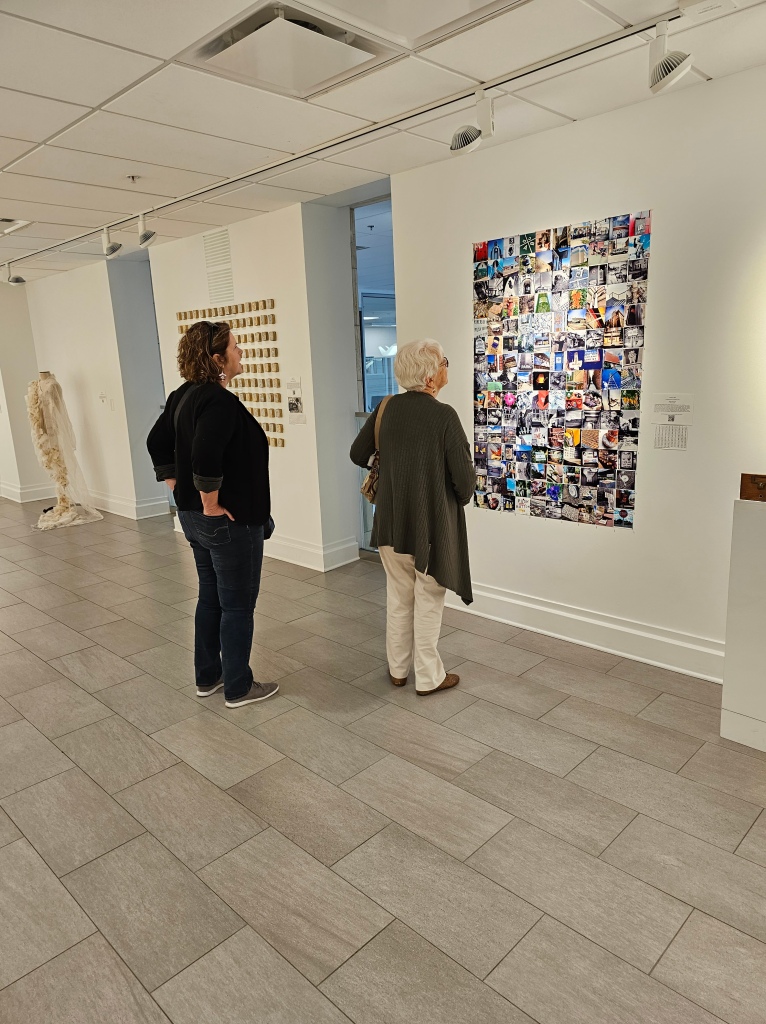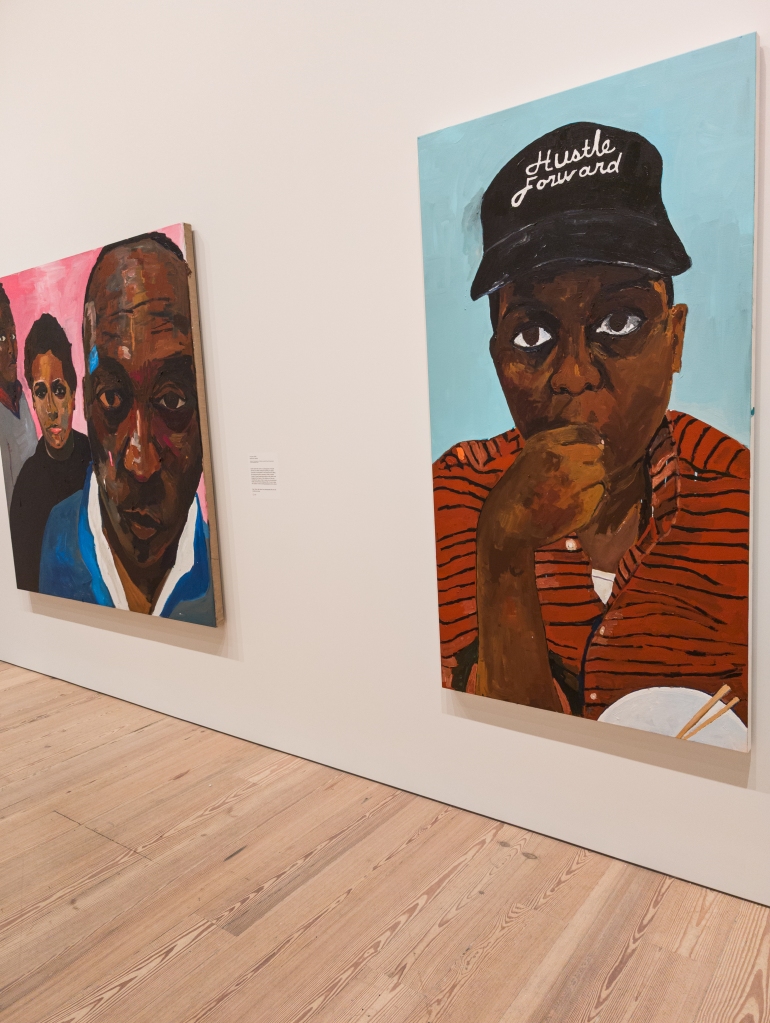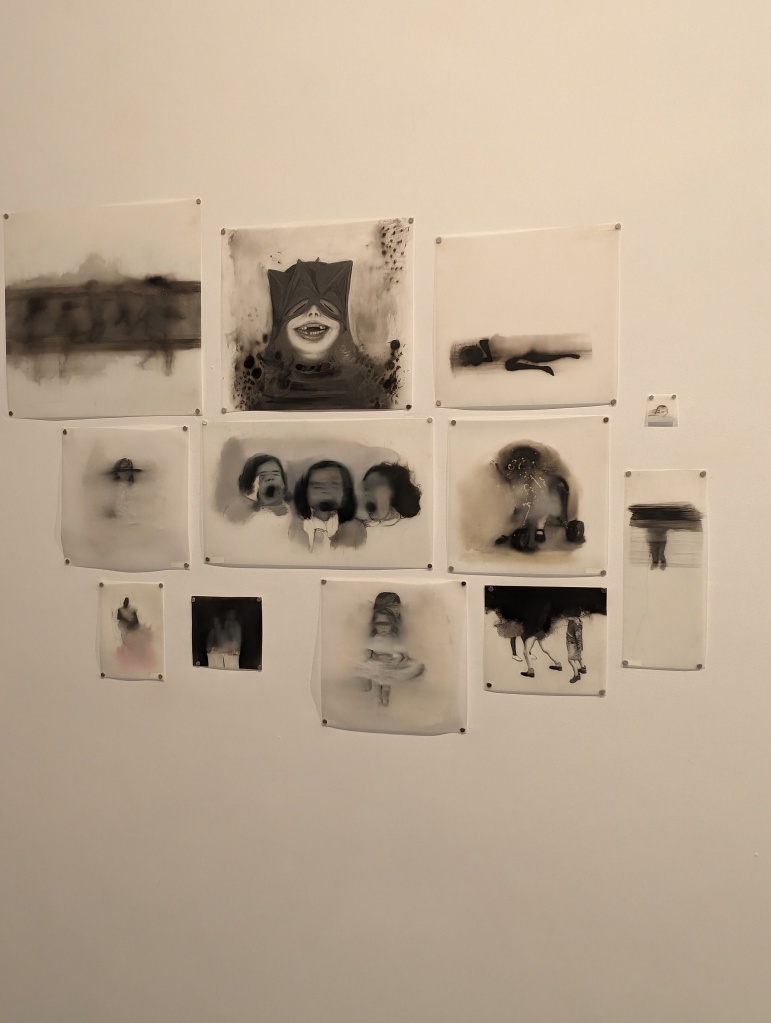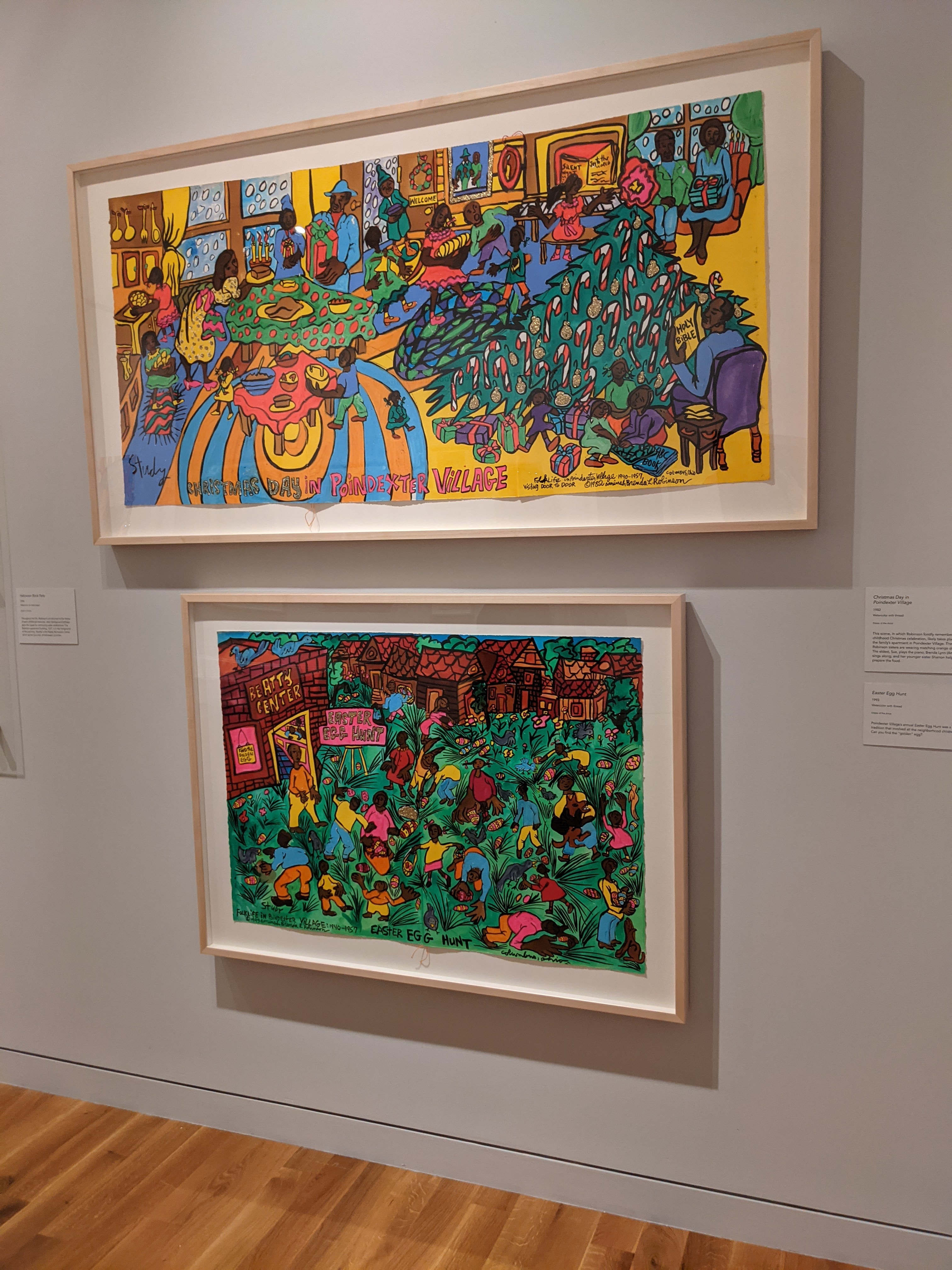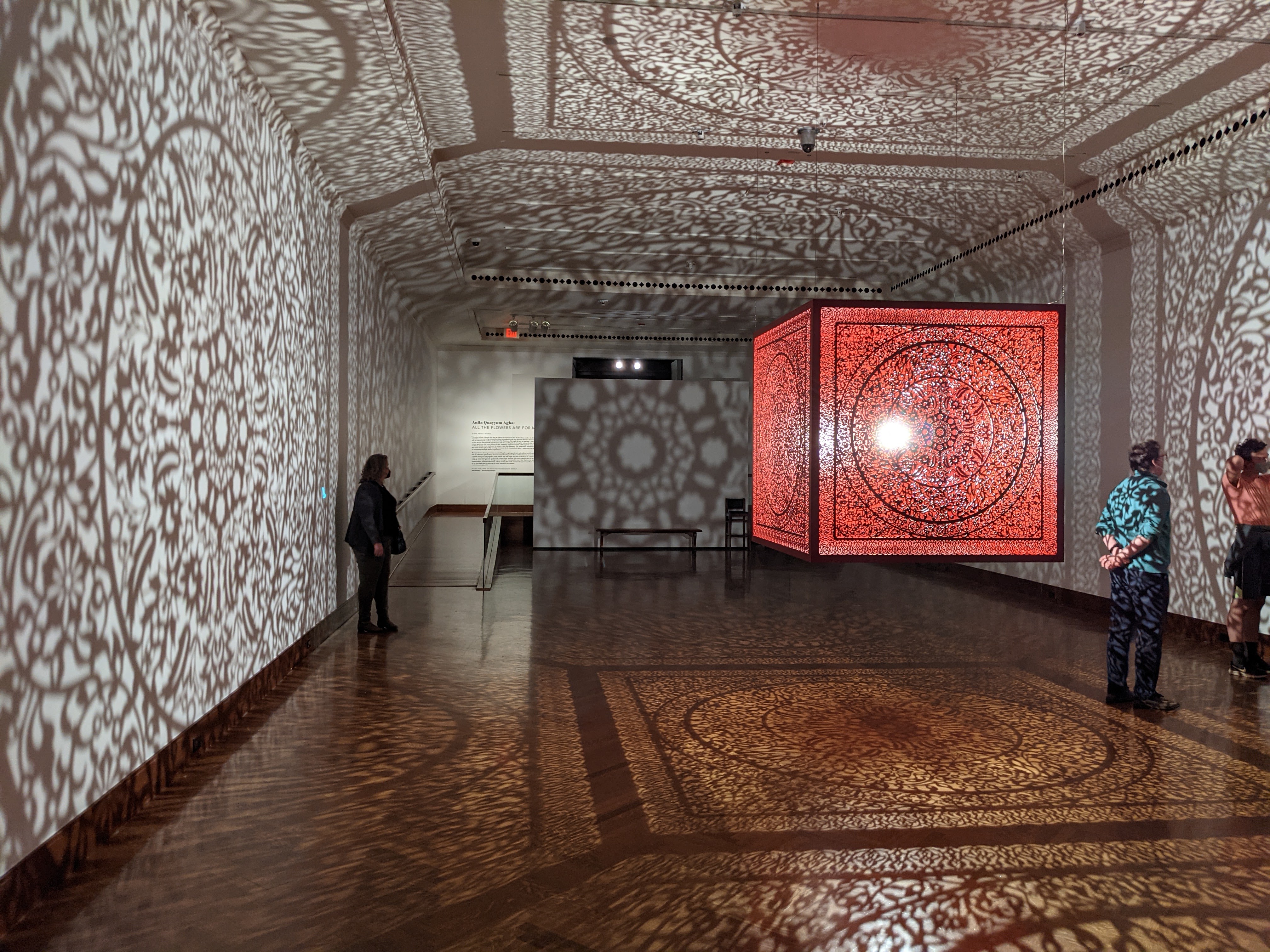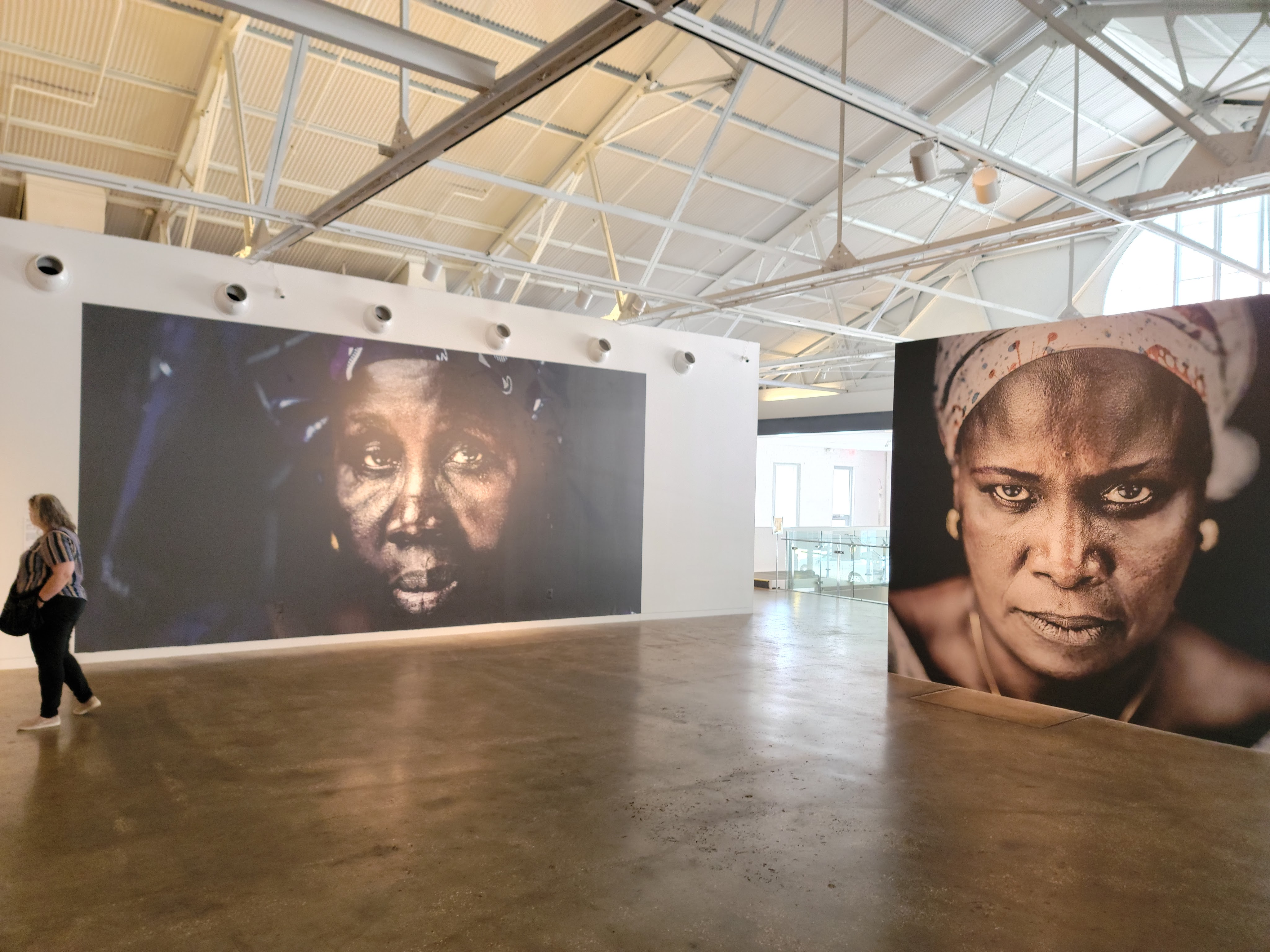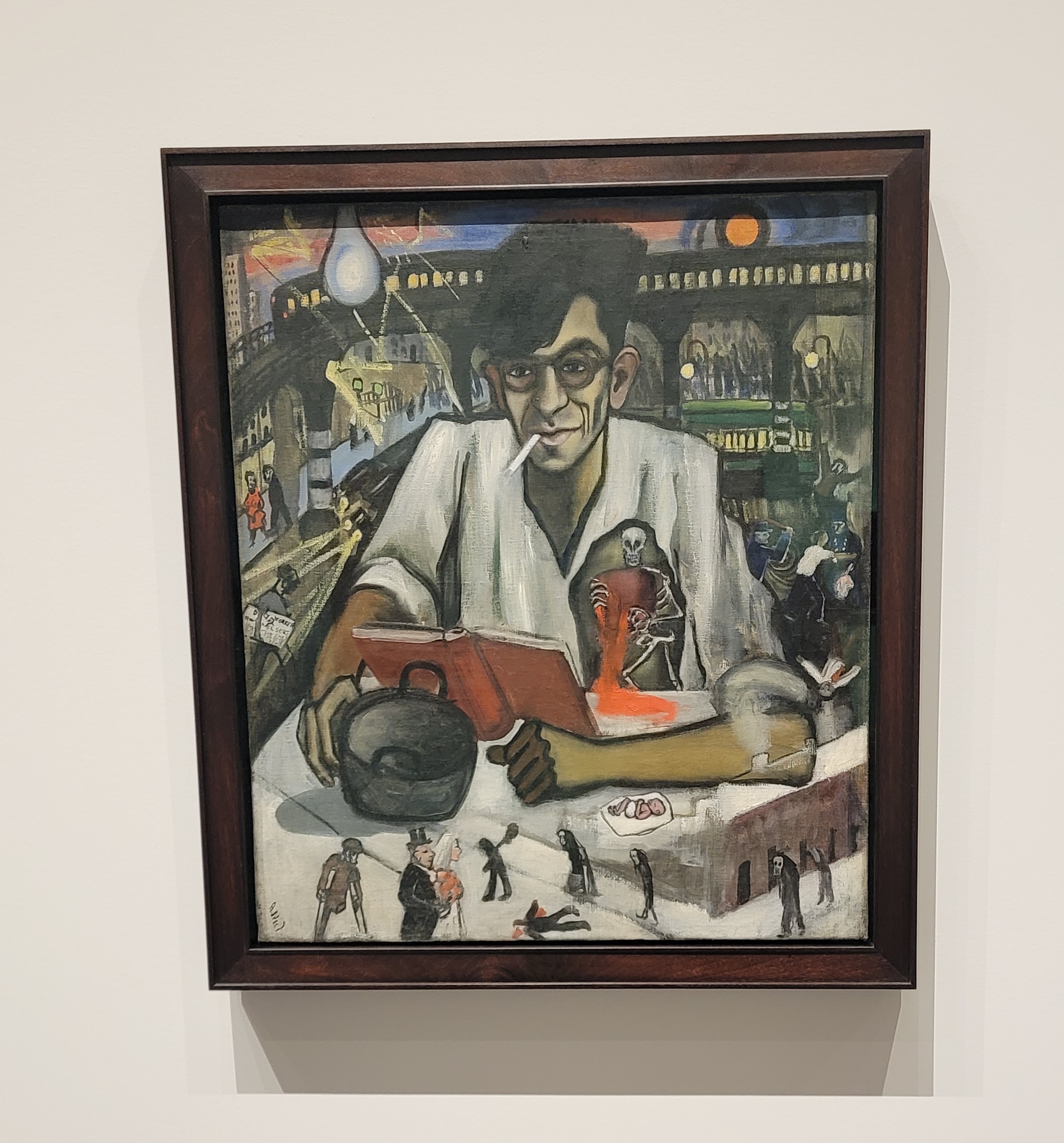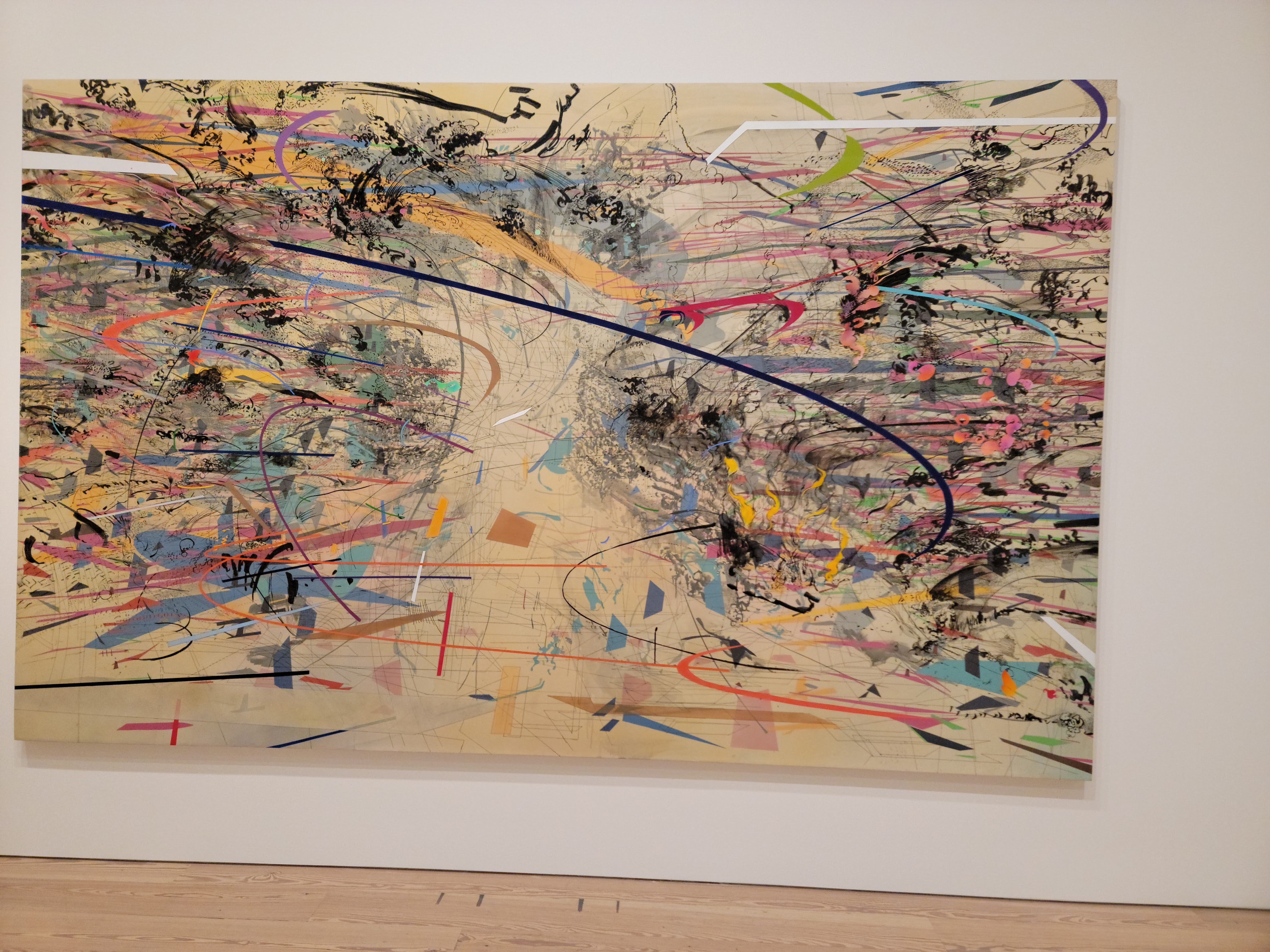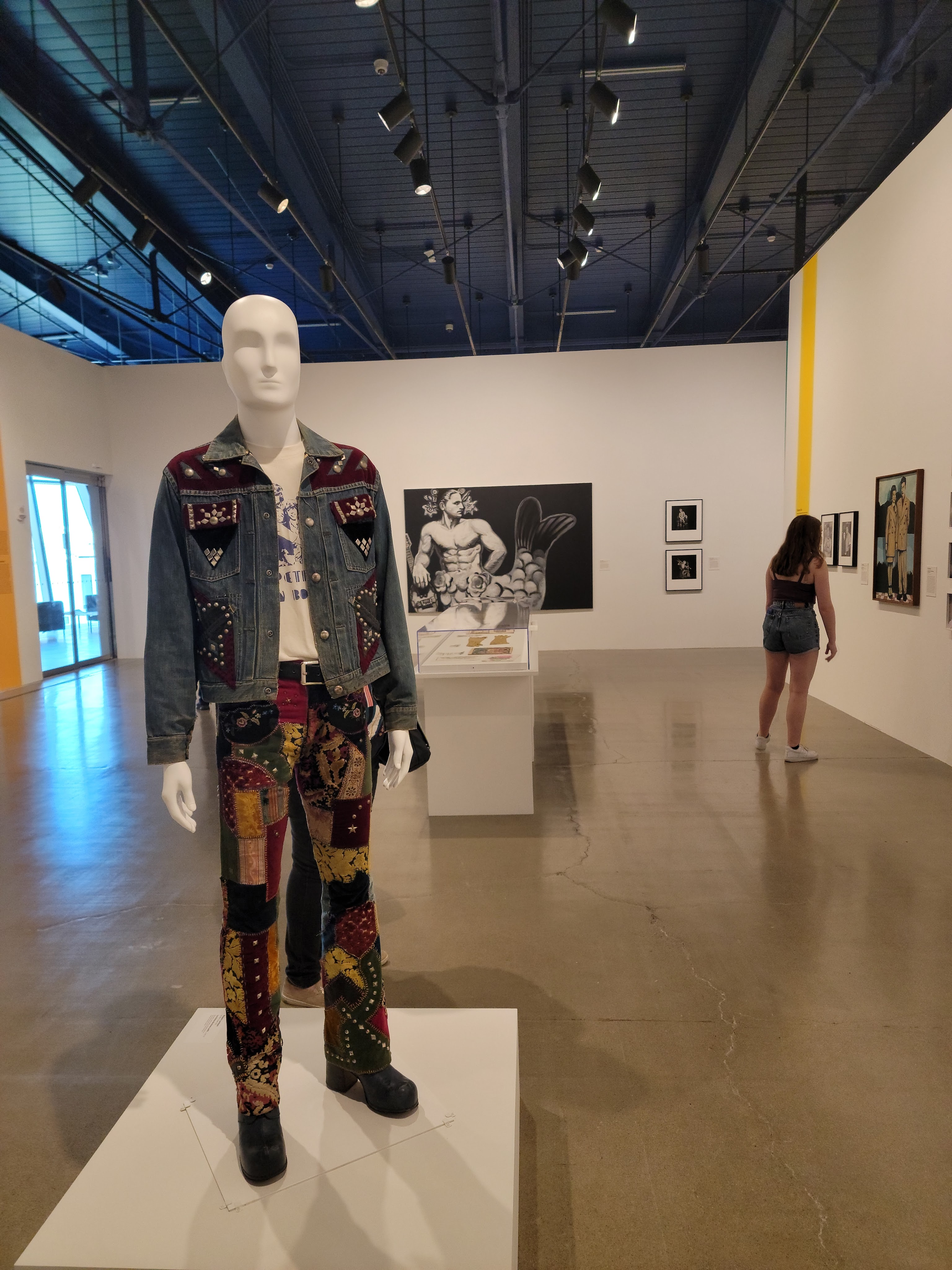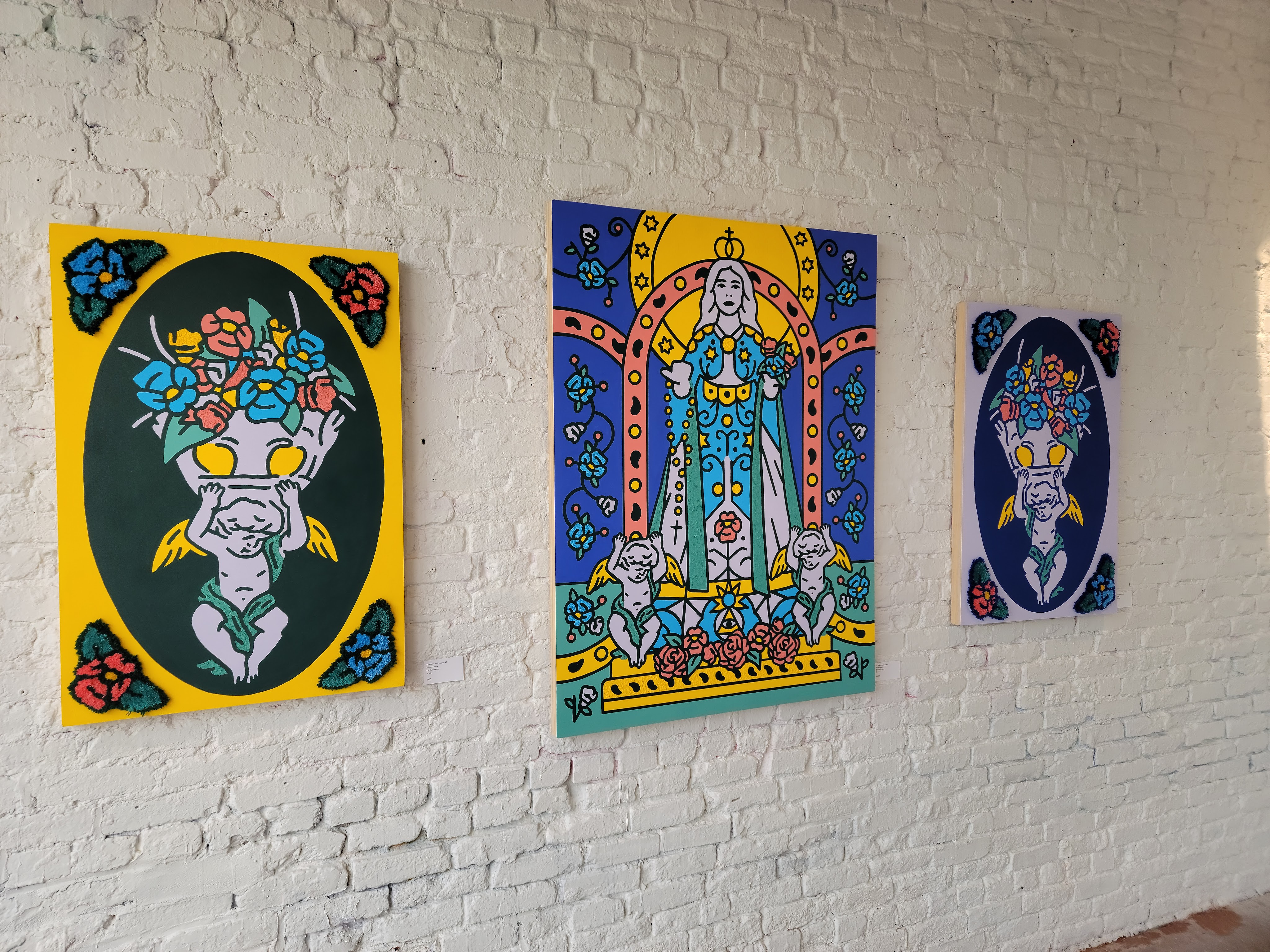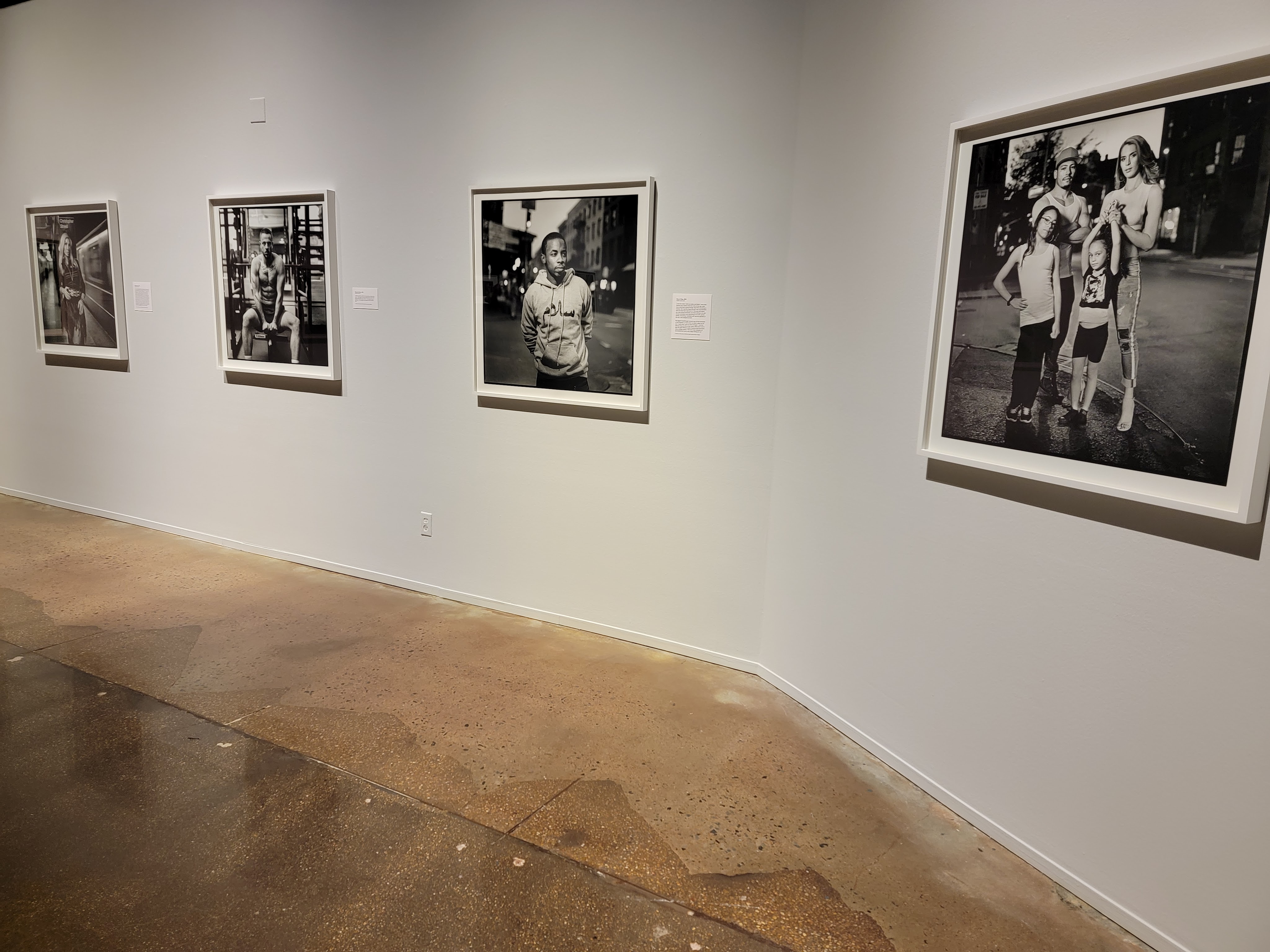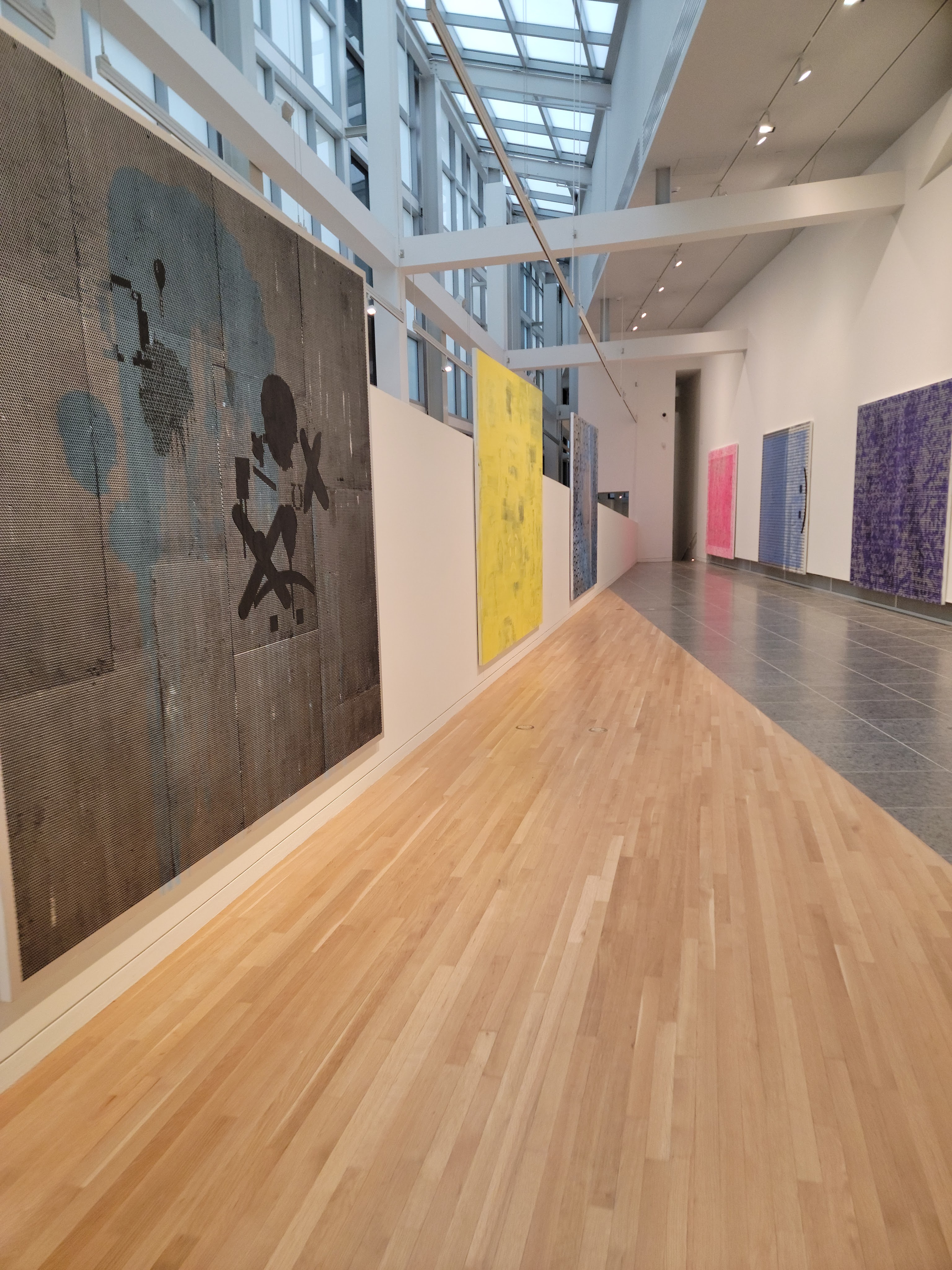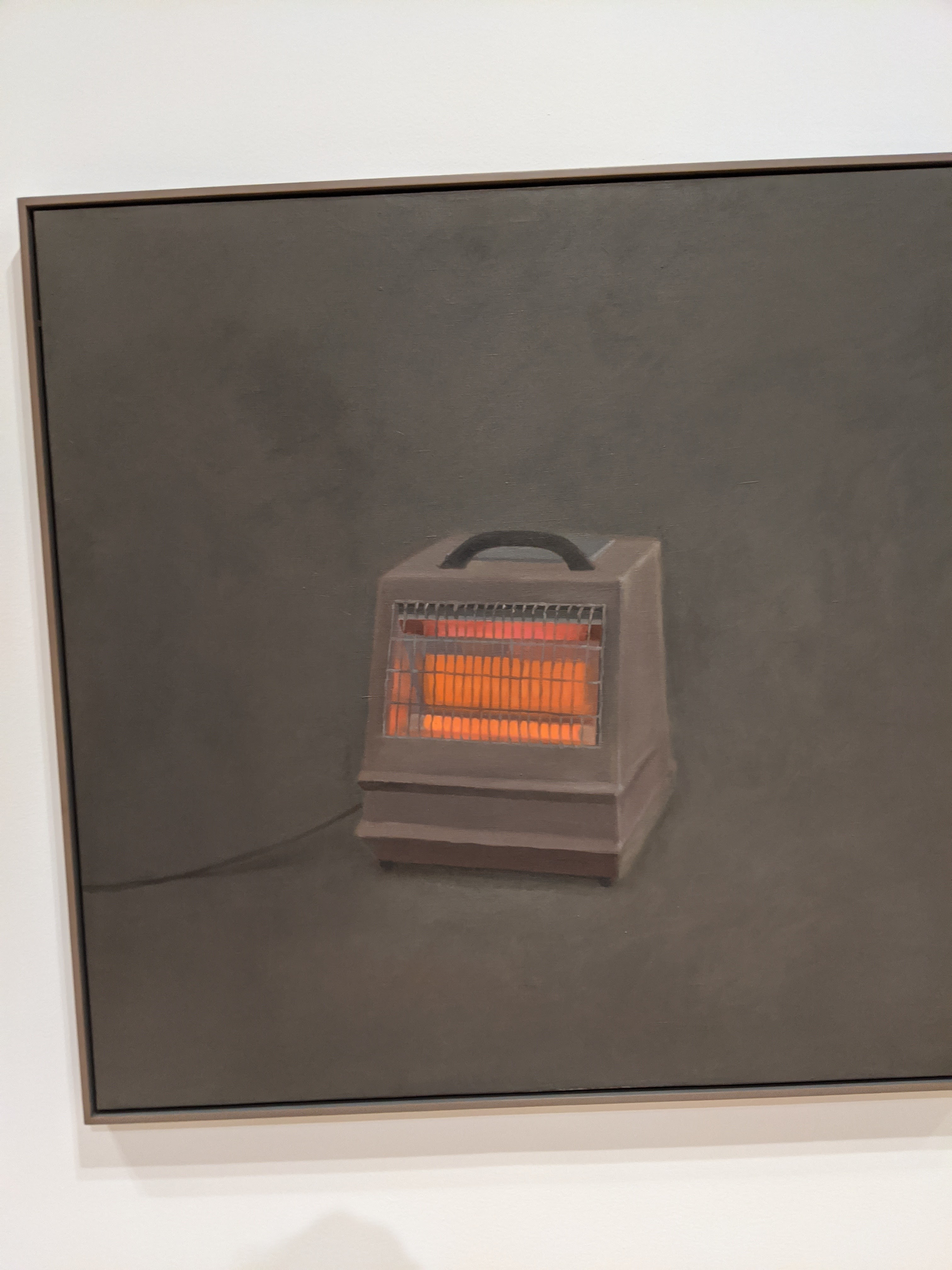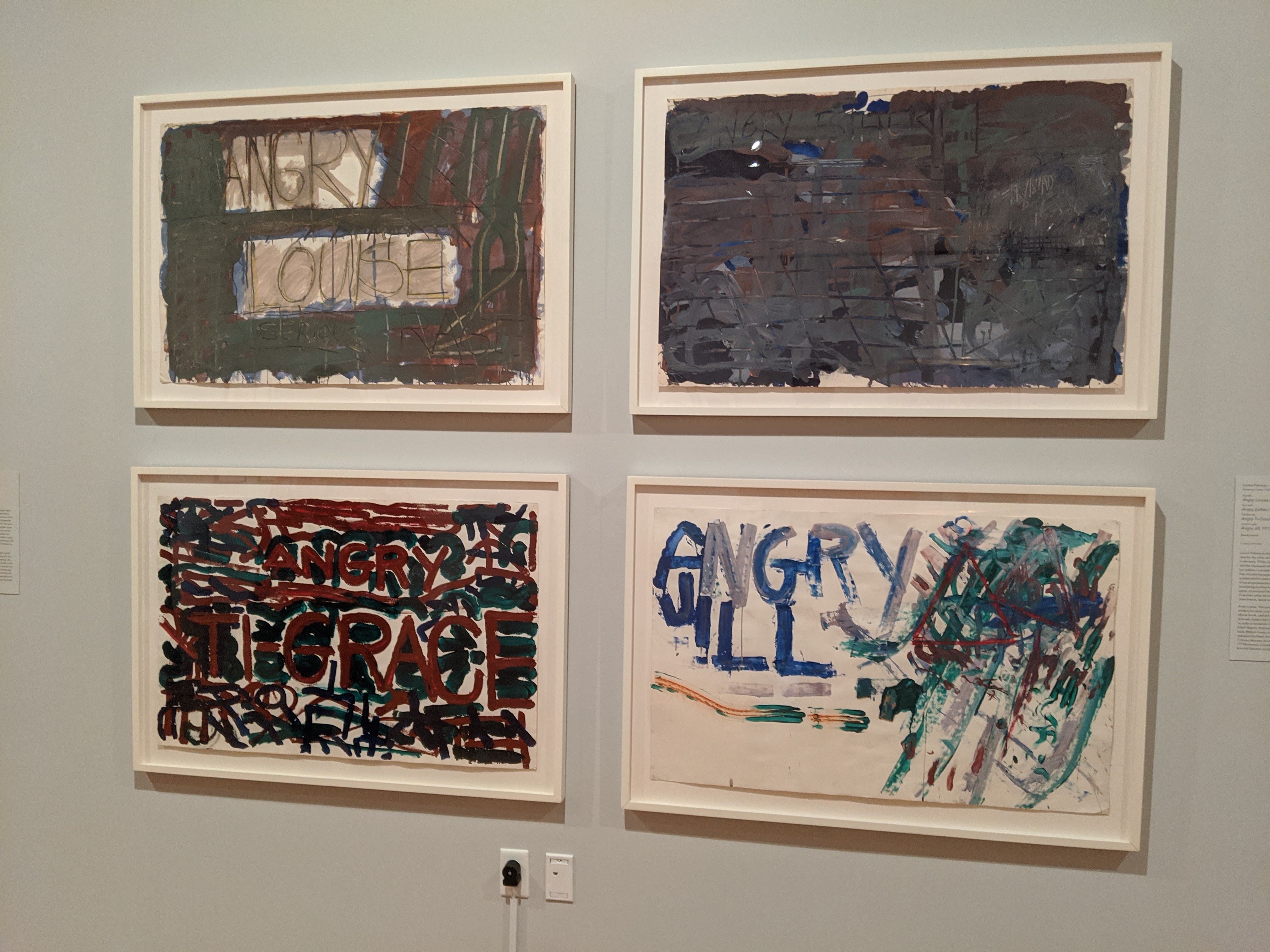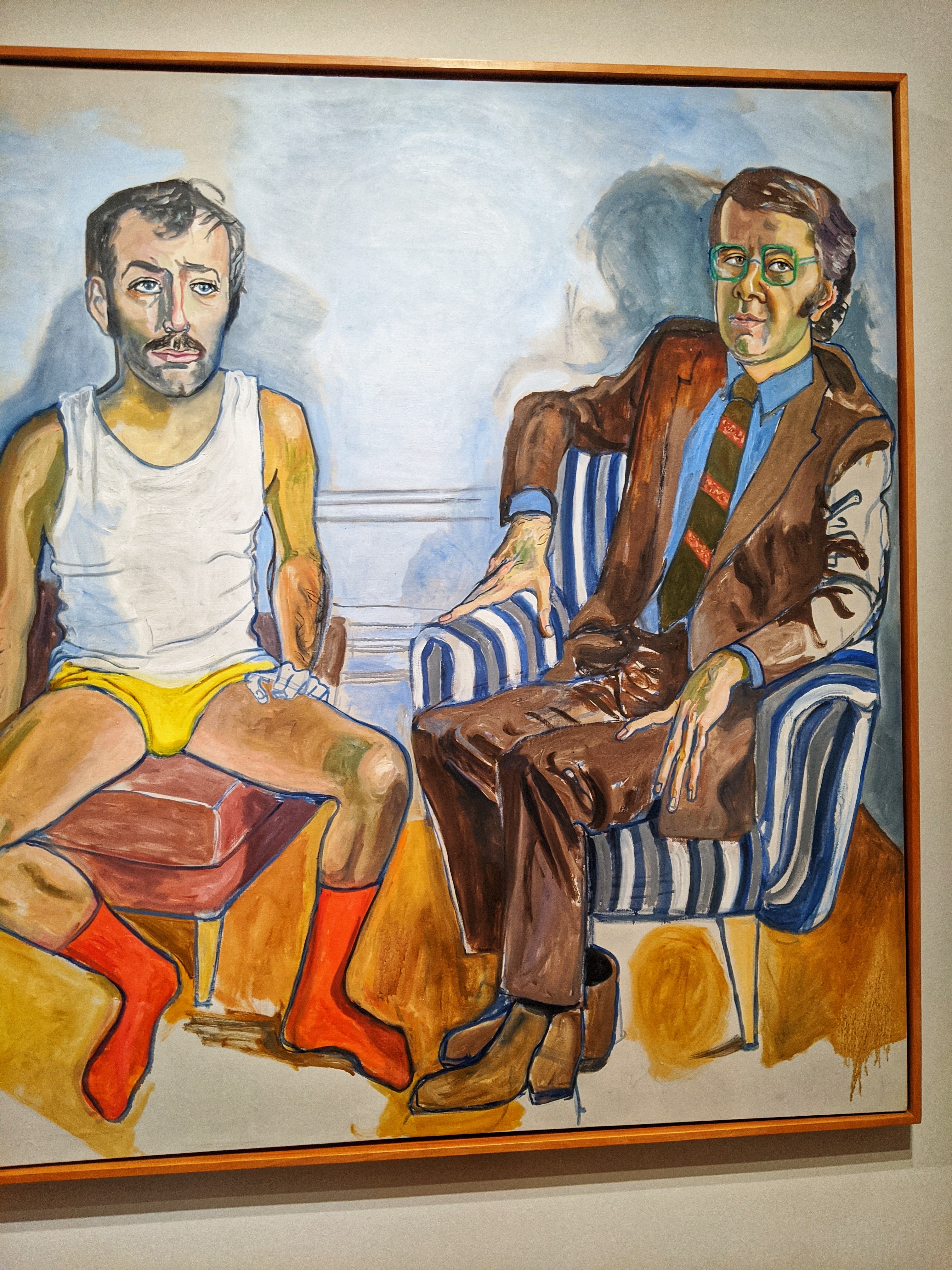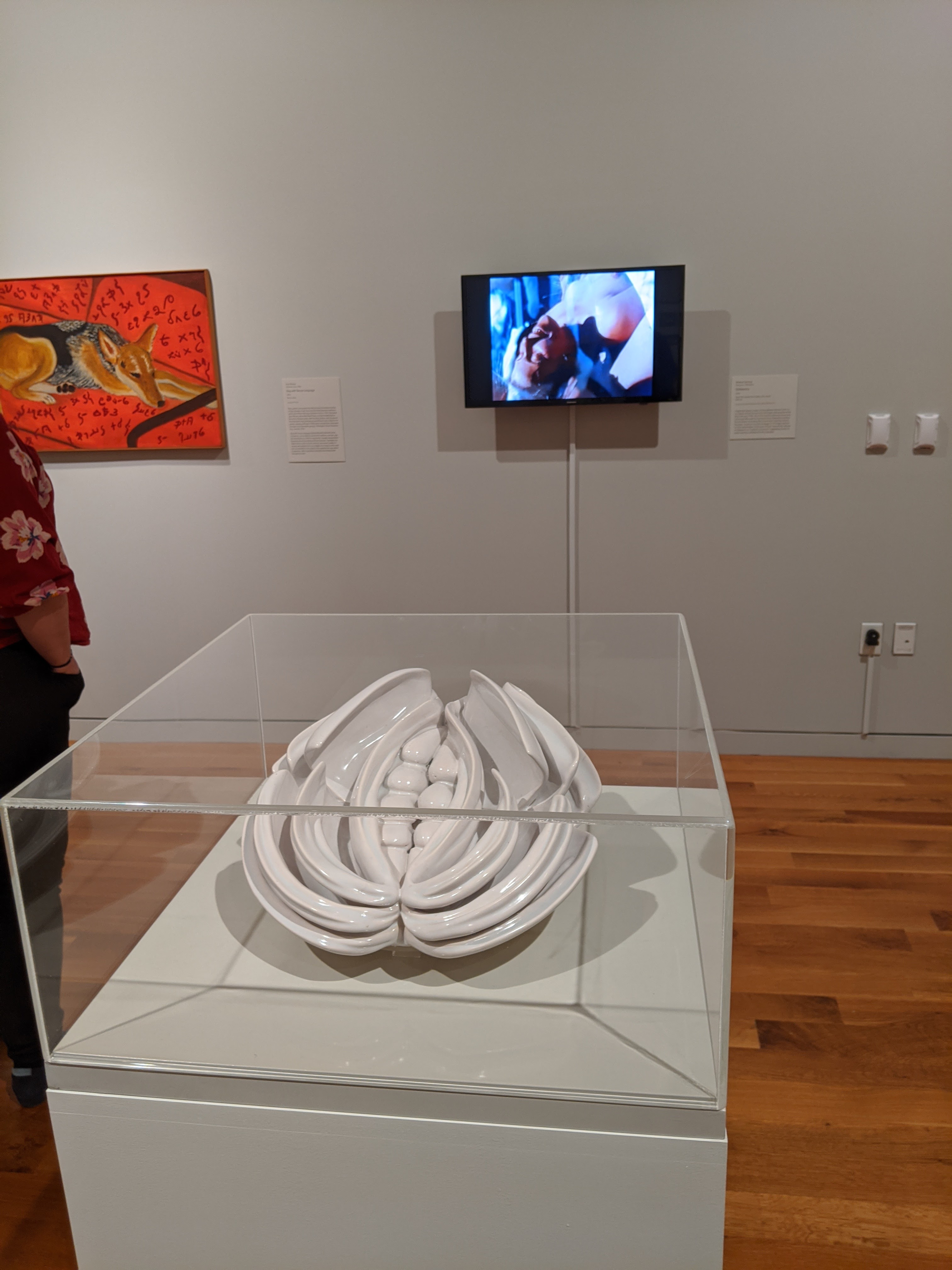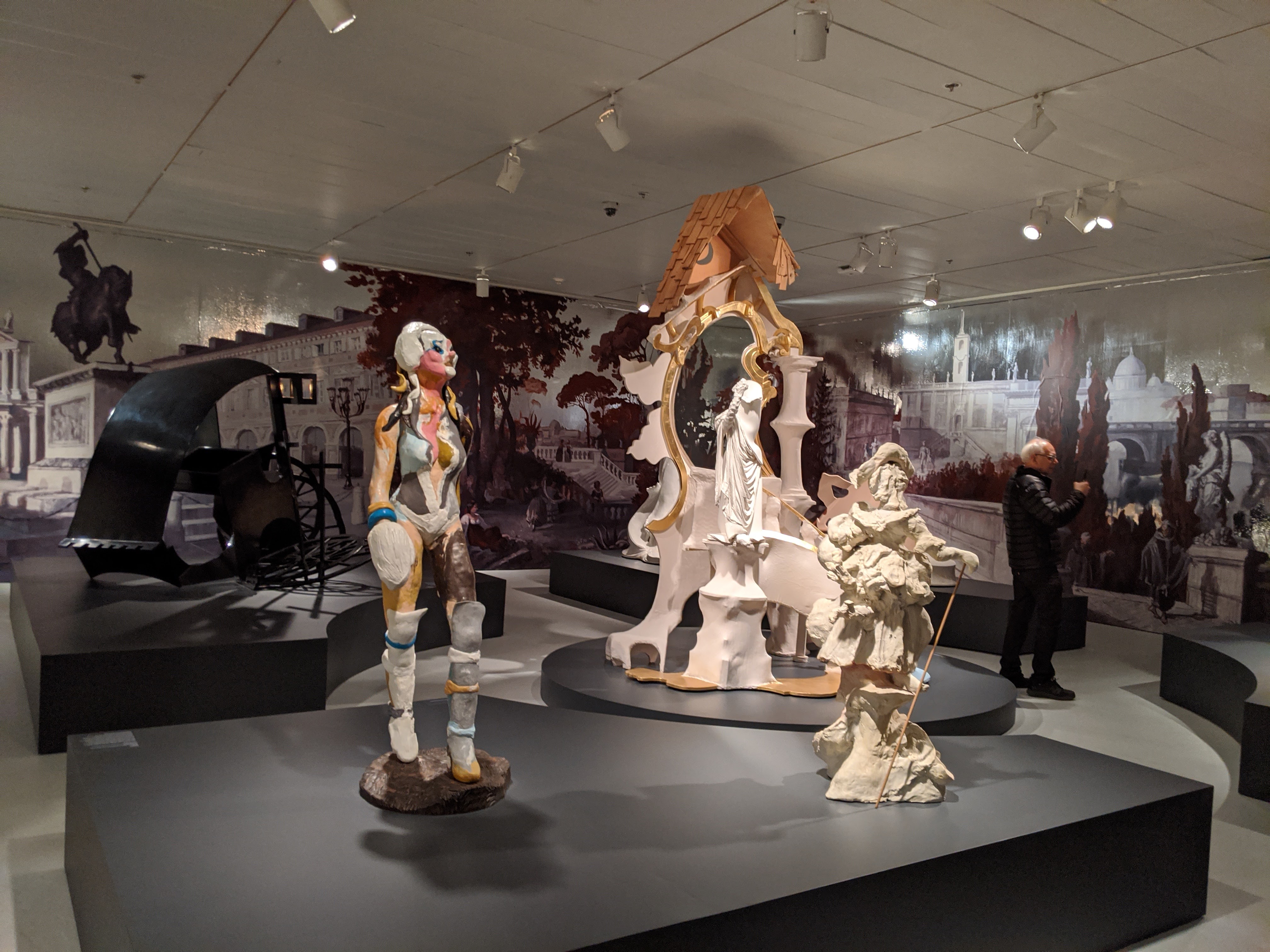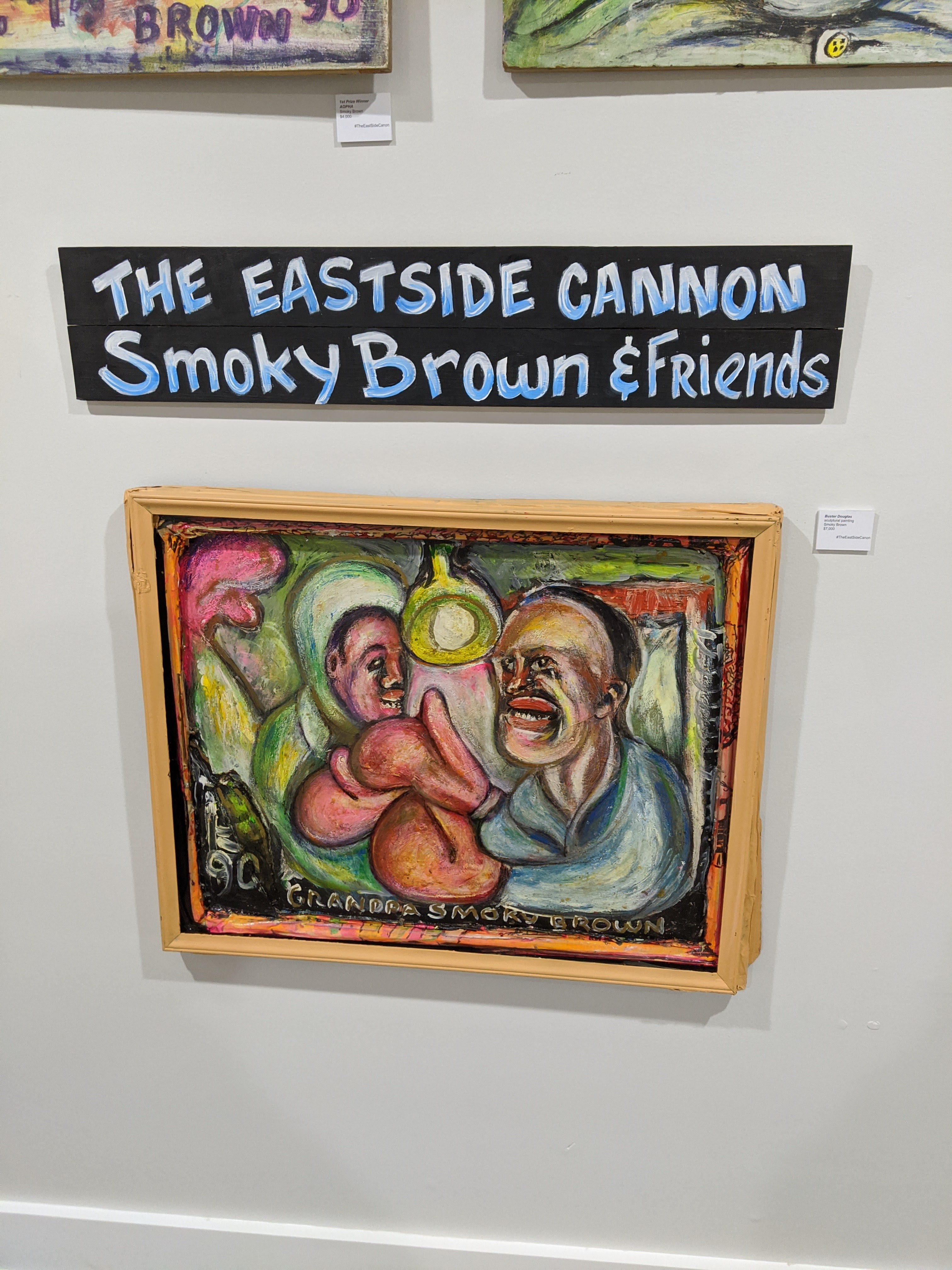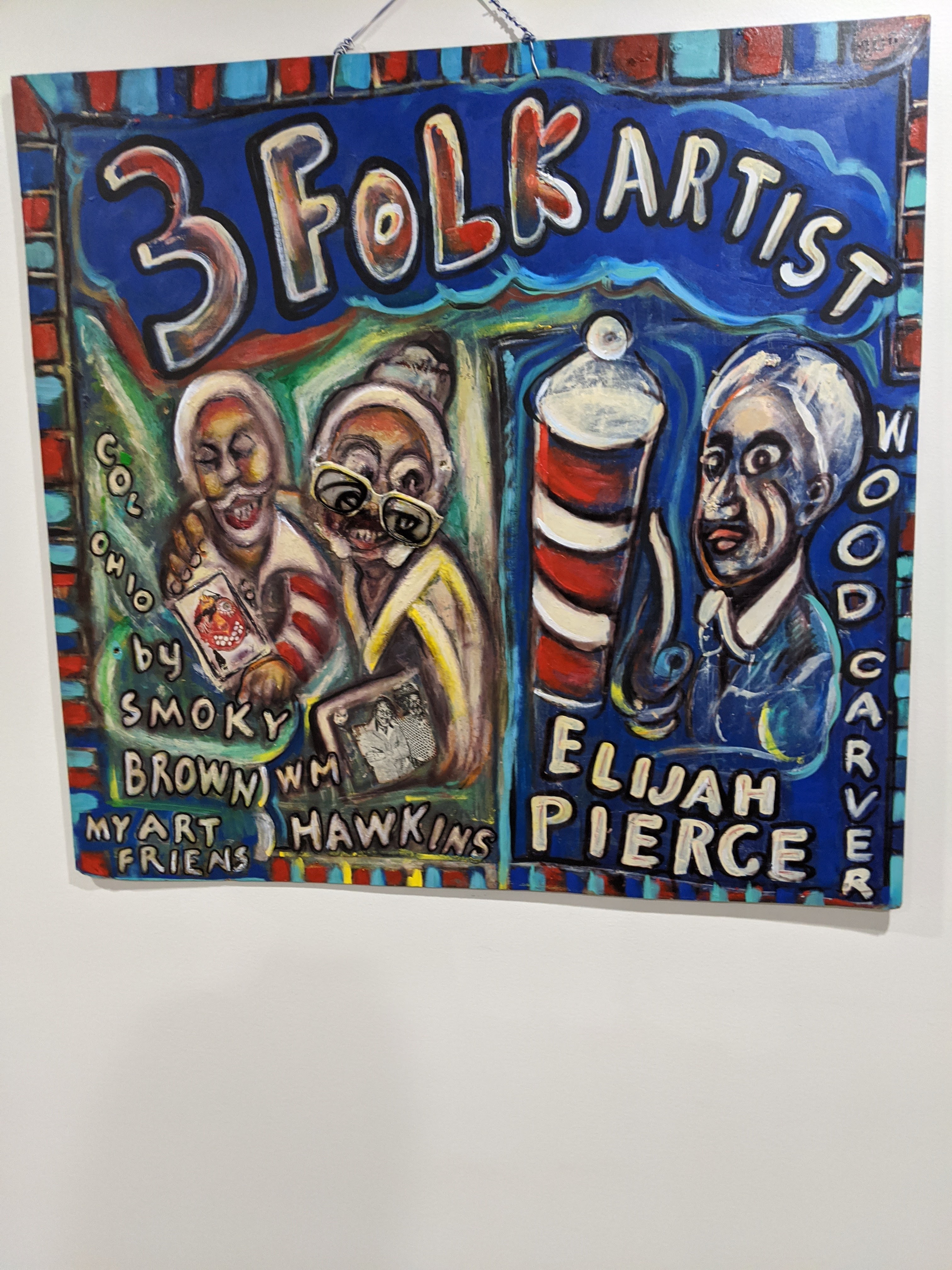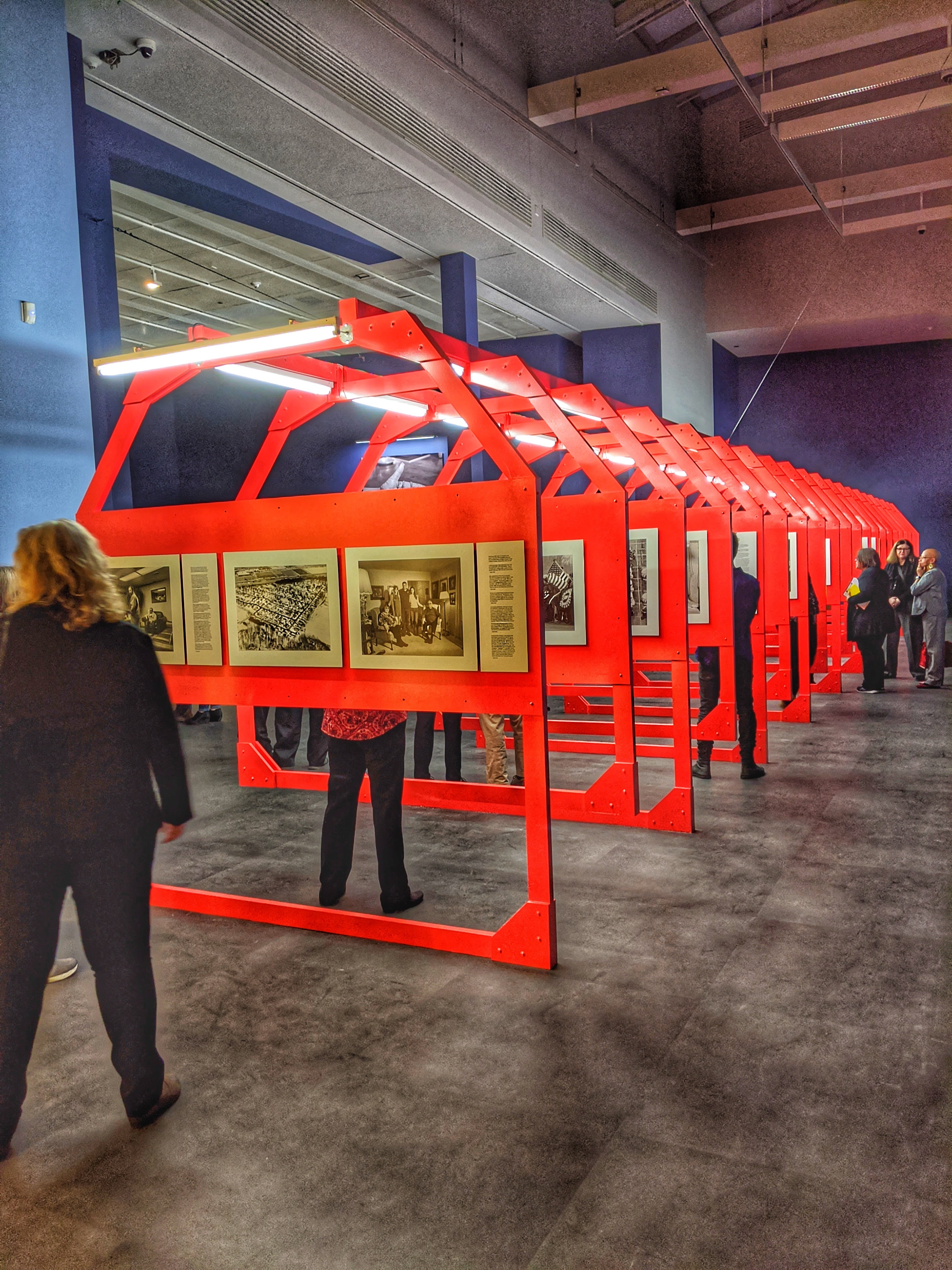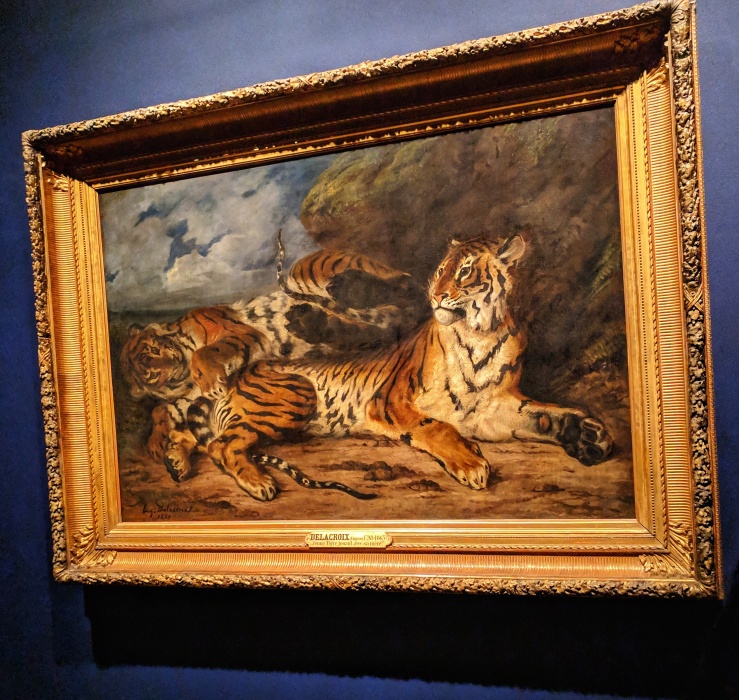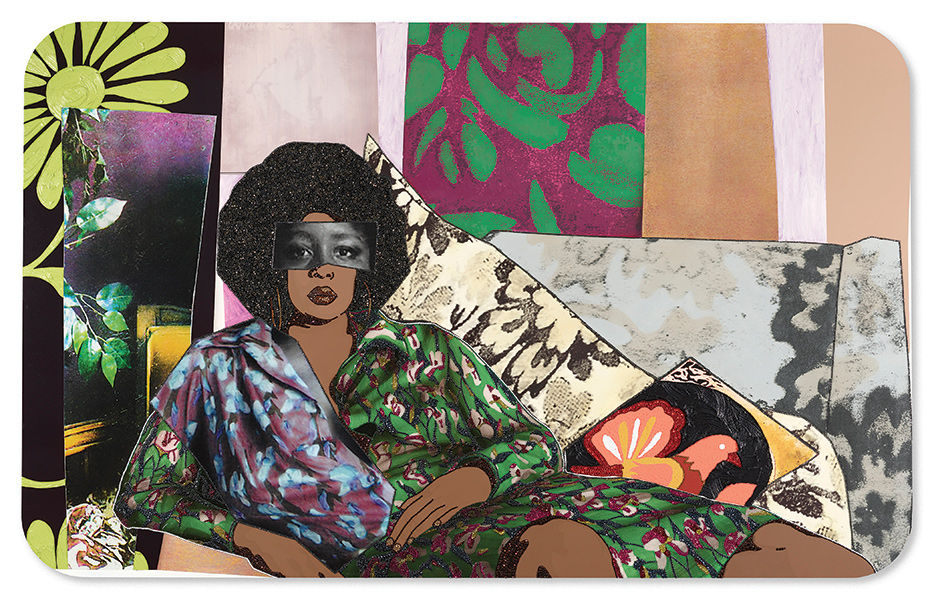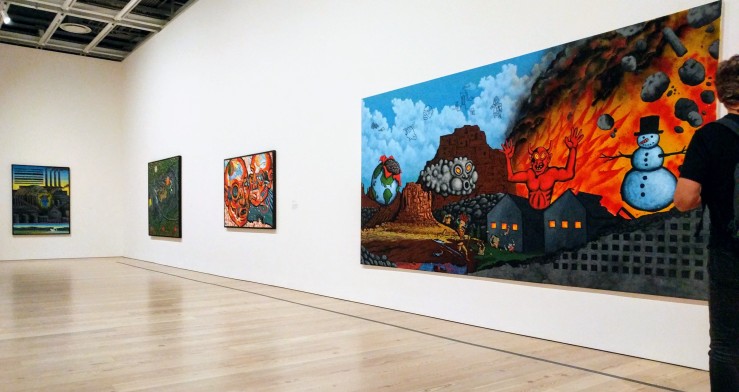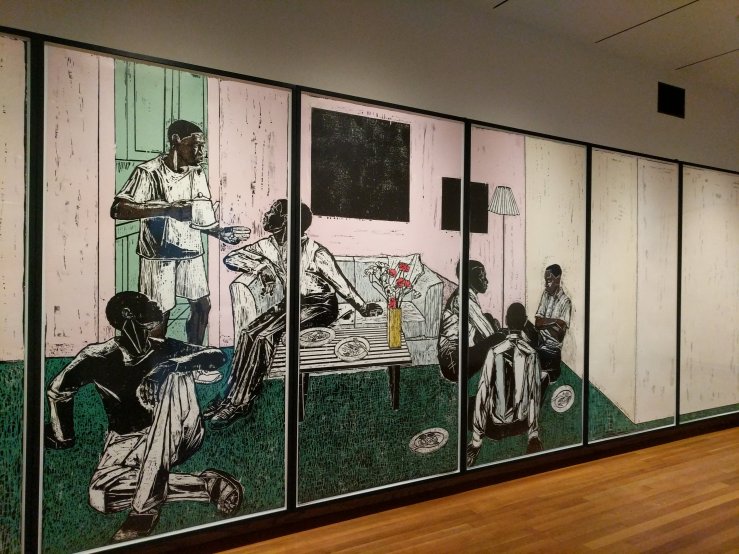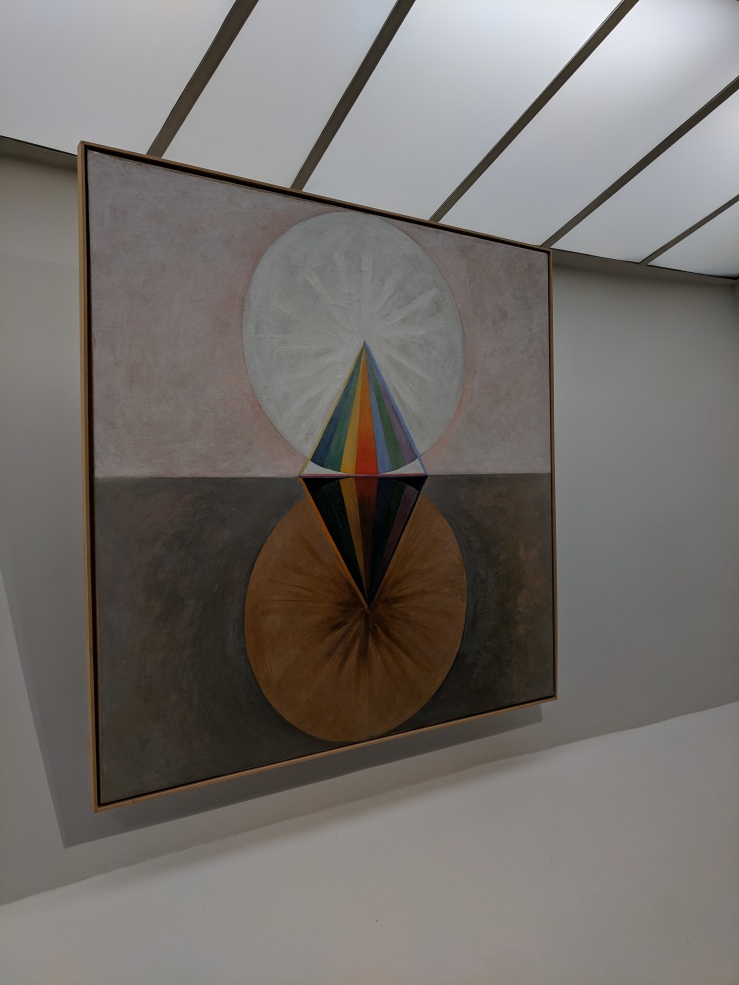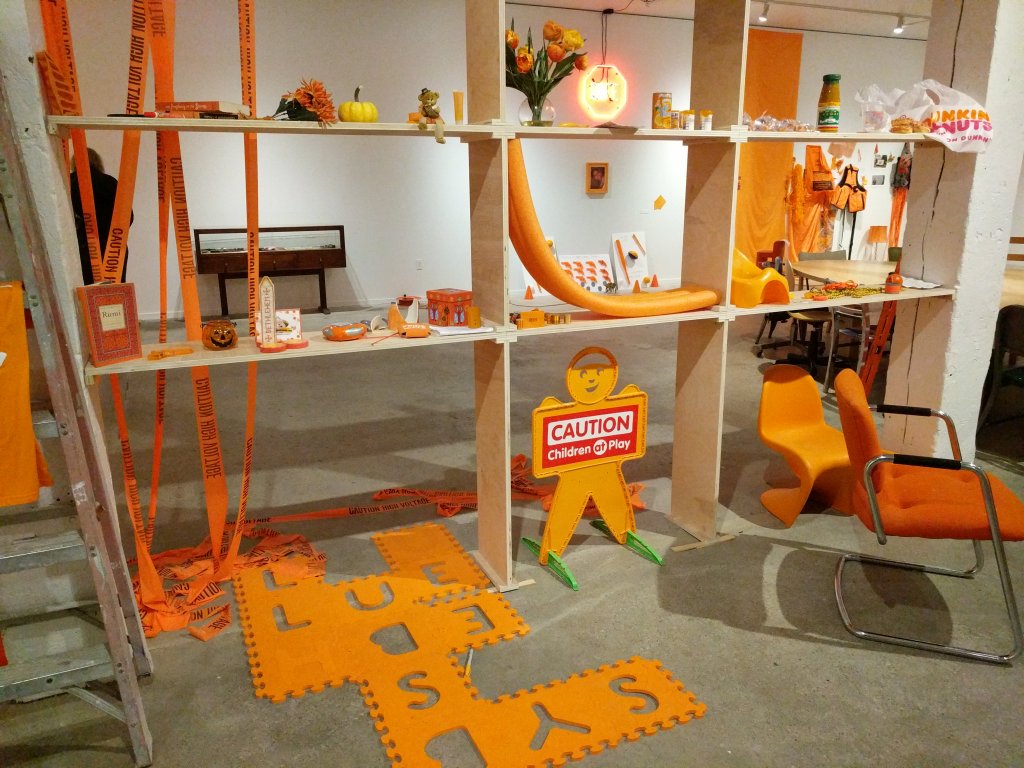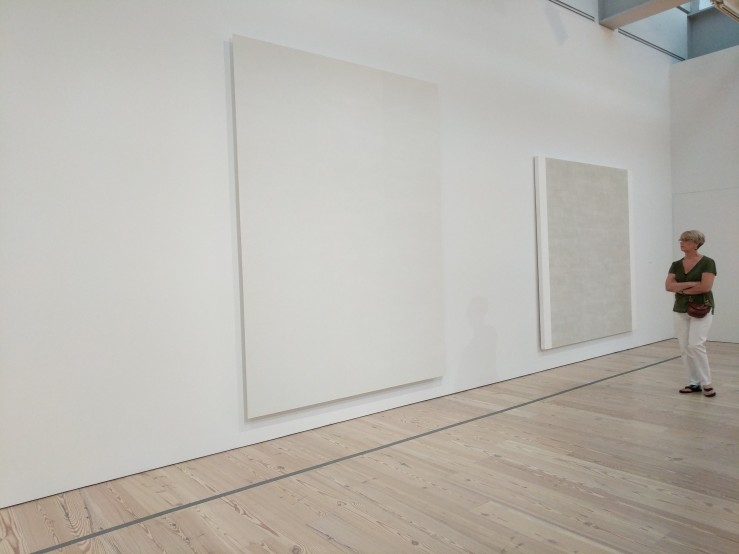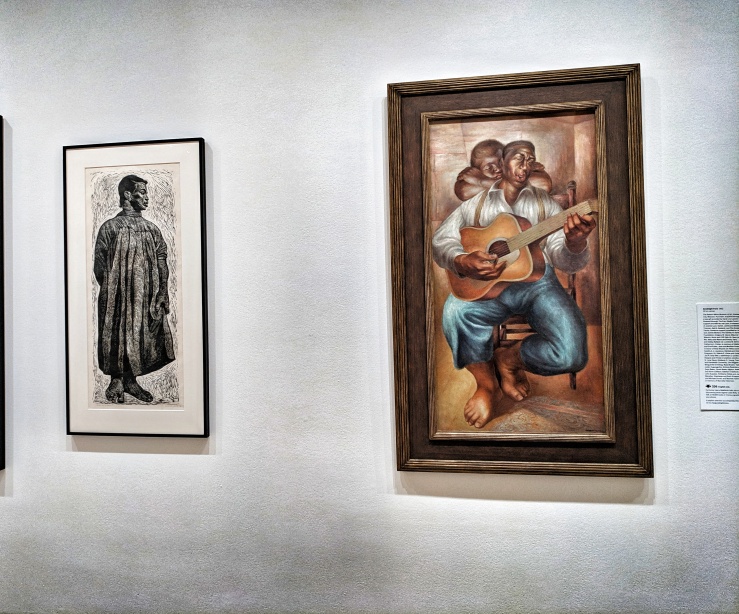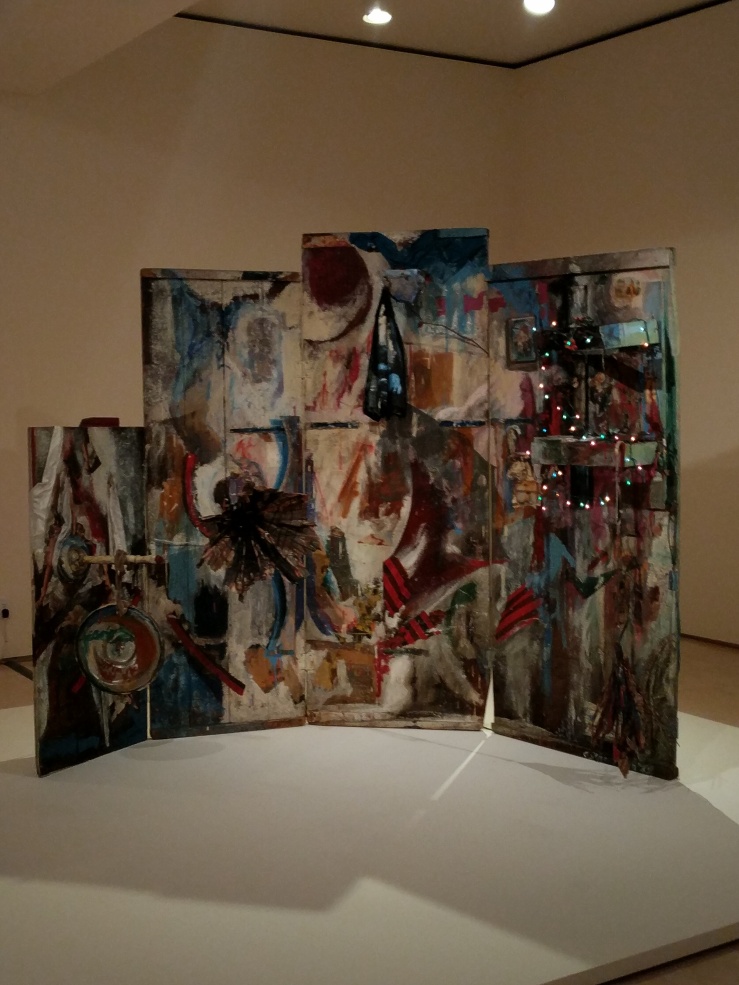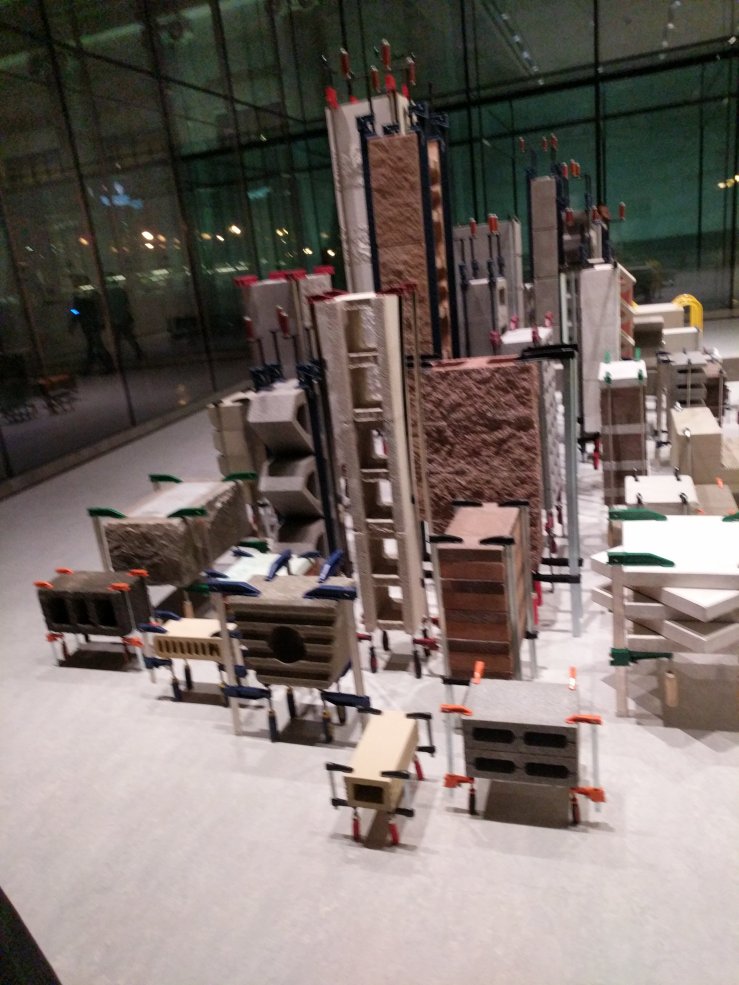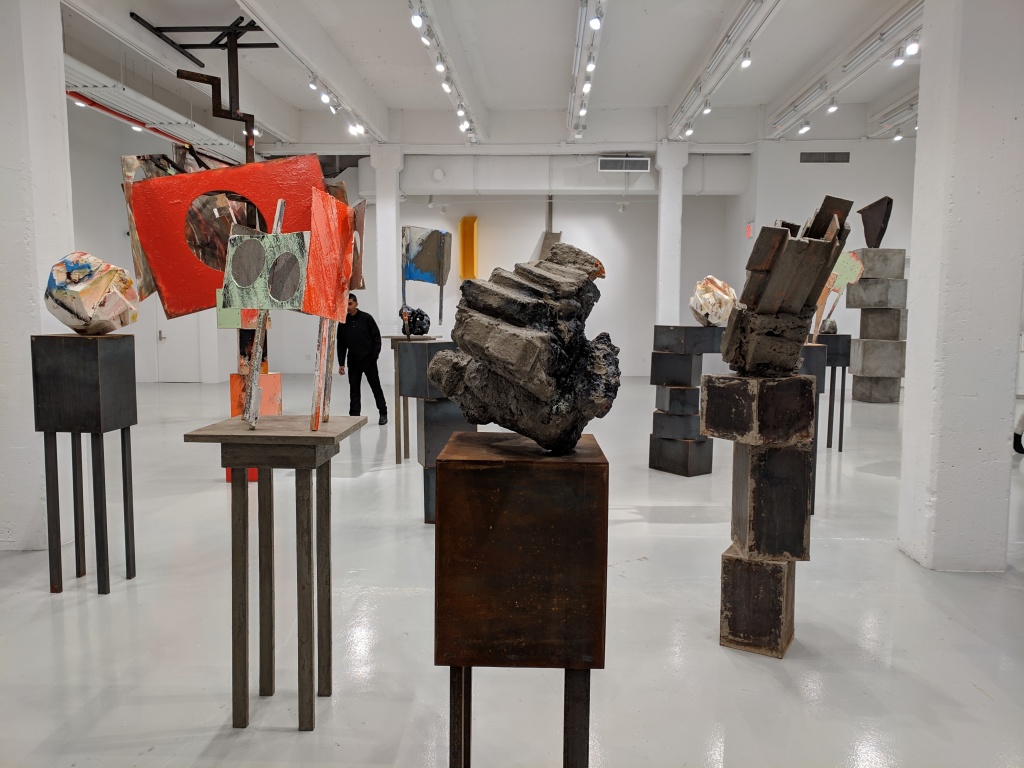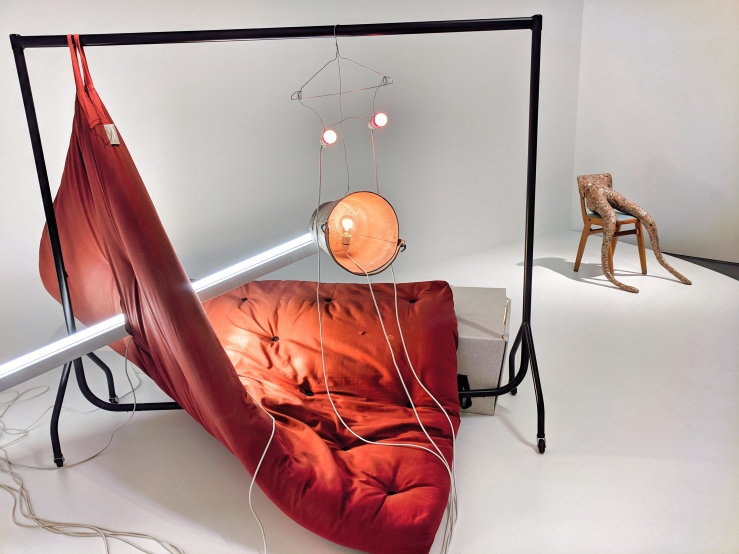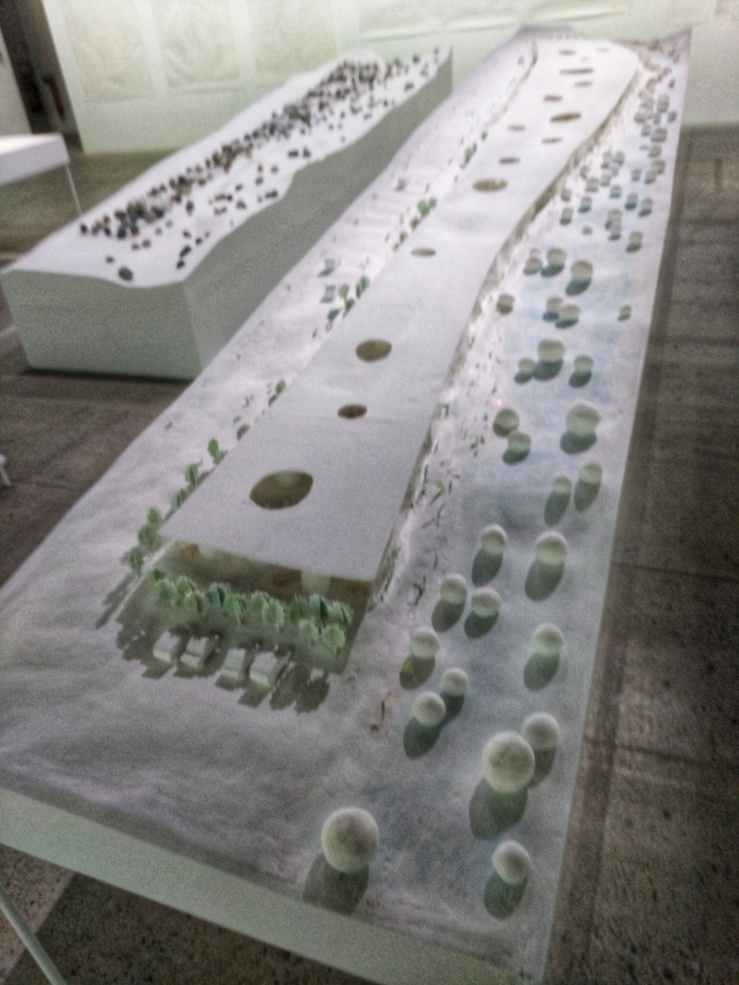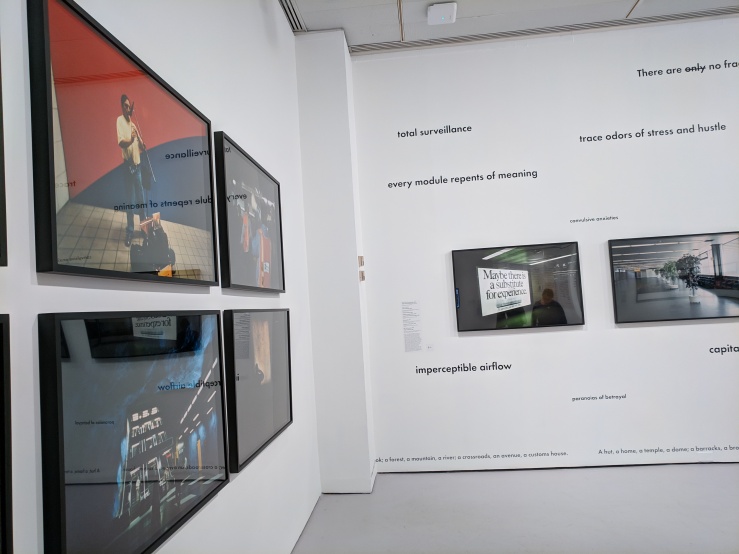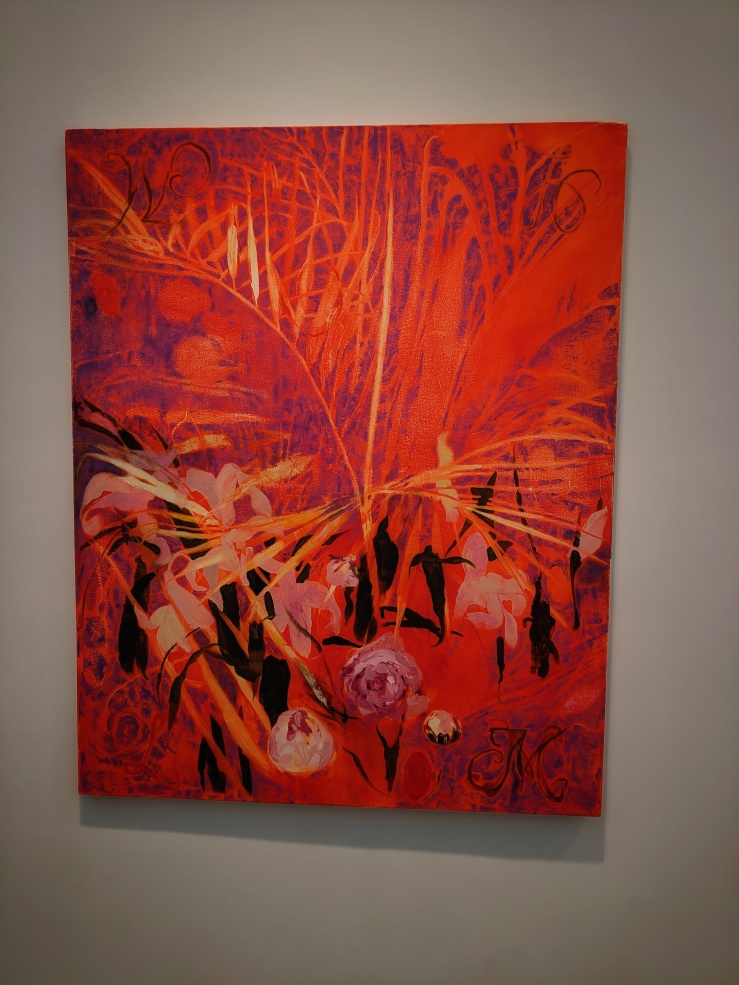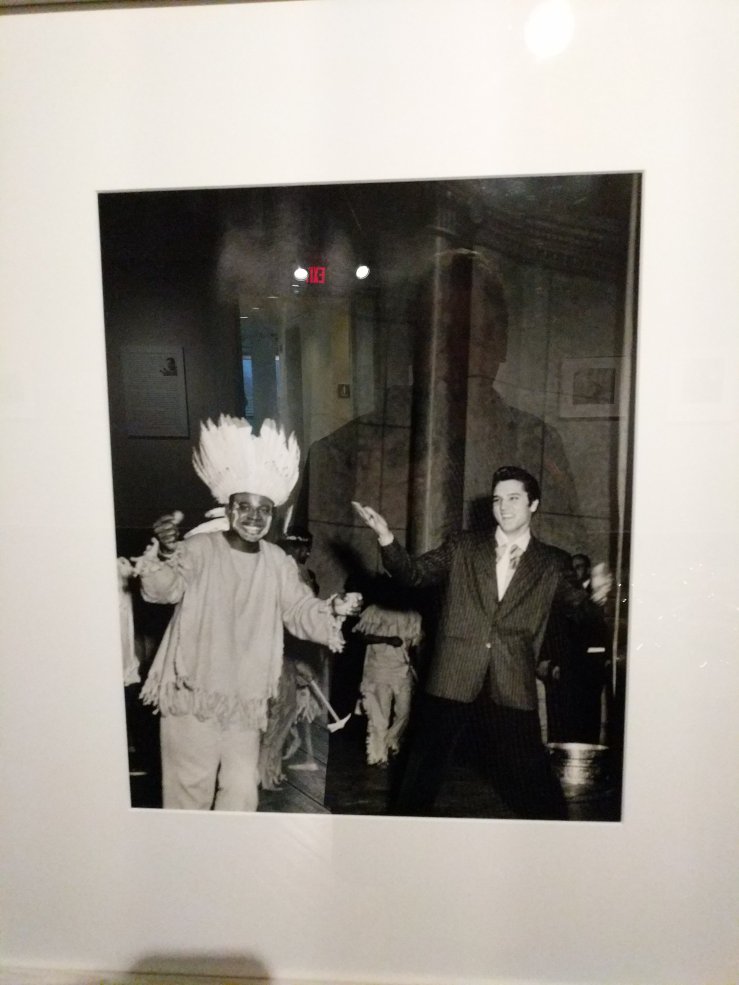What an astonishing year for visual art this was – 64 exhibits in 6 cities, and very little of it let me down. I got my head turned around repeatedly and – for what’s in my town – I often came back again and again to drink from that fountain.
I want to take a few seconds for an elegy with the hope of rebirth for Skylab. I had dear friends who ran it over the years – I just saw one last weekend – and from the first time I went at 19 (ish), I knew my city was better for it. For that kind of a DIY space to hold on in a rapidly changing downtown for 27-ish (I feel like Berry Van Boekel and a couple of other people started hosting art shows in 1997 but I could be off by a few years) years is a marvelous achievement in itself.
Just as worth celebrating is the way it shifted with the interests of the residence but kept the quality so fucking high. The one exhibit on here I knew would be on this list within seconds of walking through the door, and it was of a lineage with the art I drank lukewarm cans of cheap beer and took in during my early 20s but for today. The music shows weren’t rage soaking out of my pores to Sword Heaven and Skeletons anymore, but the dance floor for Melanie Pagani one night I slipped into dance away the memory of a terrible play I saw was packed and the music was spectacular. If you have a few dollars, give to their relocation GoFundMe: https://www.gofundme.com/f/help-skylab-gallery-find-a-new-home
As with the other lists, everything here is in chronological order (the three Ming Smith exhibits are grouped based on the first one of those I saw), in Columbus unless otherwise stated, and any photographs are by me unless otherwise stated.
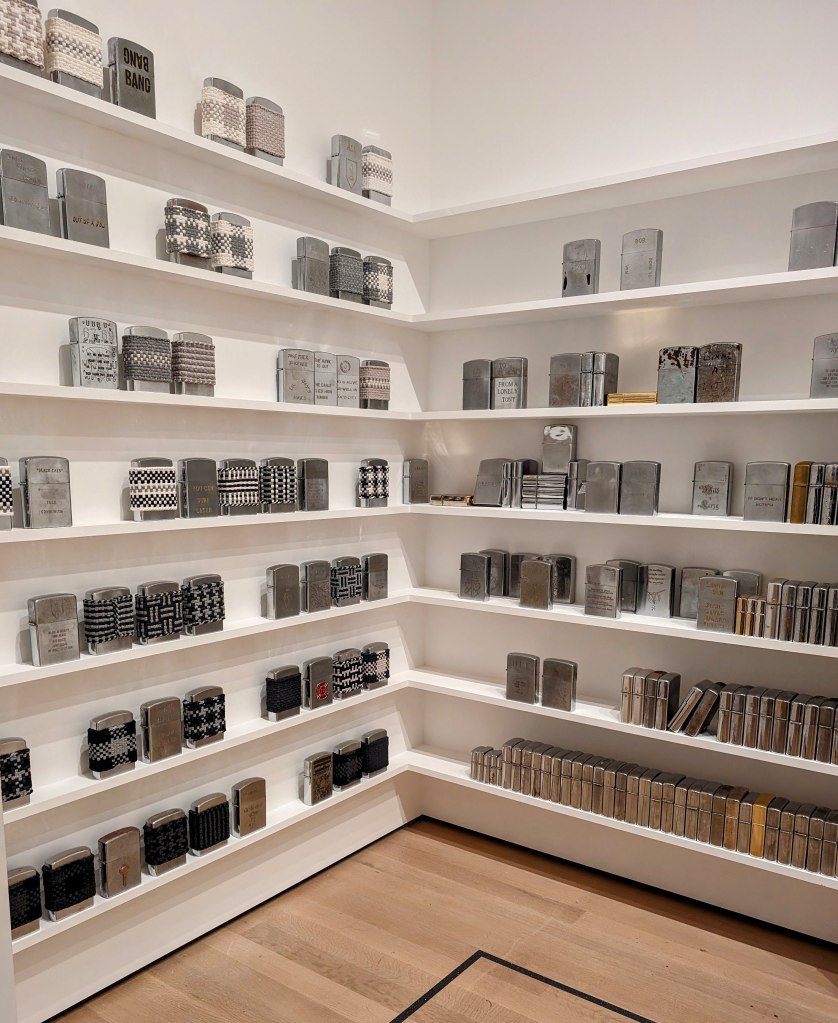
- An-My Lê, Two Rivers; MoMA, NYC – My first exhibit of the year, while in town on an impromptu trip around APAP, also coincided with a Members guided tour with a curator of this fascinating mix of installations, sculptures, and photographs drawing lines between war games and her family’s exodus from Vietnam, smashing decades and locations together in ways that included art history and a point-of-view. Staggering.
- Various Artists, 24/7; Seventh Son Brewing x 934 Gallery – This ticked every one of the senses of community I’m often hungry for – Seventh Son’s welcoming spirit, 934’s interest in mixing up artists of various backgrounds and styles, and a use of the space that still sticks with me.
- Various Artists, Y’all Don’t Hear Me: The Black Appalachia; University of Tennessee Downtown Gallery, Knoxville – It’s odd writing this blurb right after hearing the great poet Nikki Giovanni died since Big Ears Festival was the last place I saw her read (her hometown, to a packed 1,000+ room at the Mill and Mine), and this group show in tribute to Giovanni they put together the next year was already echoing in my mind. A beautiful cross-section of the black community in Appalachia that doesn’t get spoken of as often as it should and dazzling work.
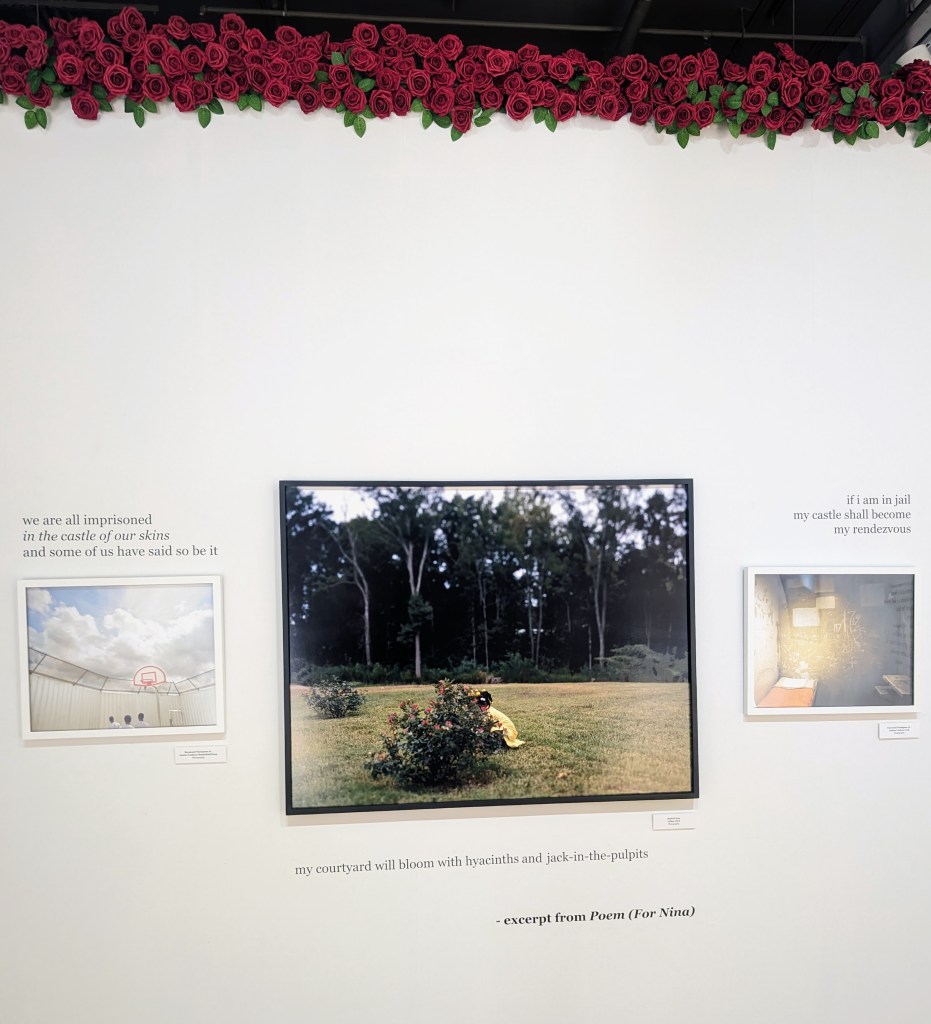
- Kara Walker, Back of Hand; Poetry Foundation, Chicago – Any time I get to see new Kara Walker, I’m overjoyed and the Poetry Foundation was the ideal space for these gargantuan, moving works on paper.
- Nicole Eisenman, What Happened; MCA, Chicago – I knew a little of Nicole Eisenman’s work but this retrospective did an astonishing job of putting the scope of her interest, her tweaking of art and social history and the way that history and community are vitally important. A show that reminded me to love the world over and over again, without shirking any of its ugliness.
- Laura Sanders, Her Habitat; Contemporary Art Matters – Finally made it to Rebecca Ibel’s new downtown gallery this year, which was as strong as her previous space. The enormous canvases in Sanders’ show hit me with the way every scene feels suffused with light from the inside out. These paintings feel hyper-realistic at first but – like the plays of Annie Baker or Branden Jacobs-Jenkins – the realism almost bends into surrealism as it gets to a deeper psychological truth.
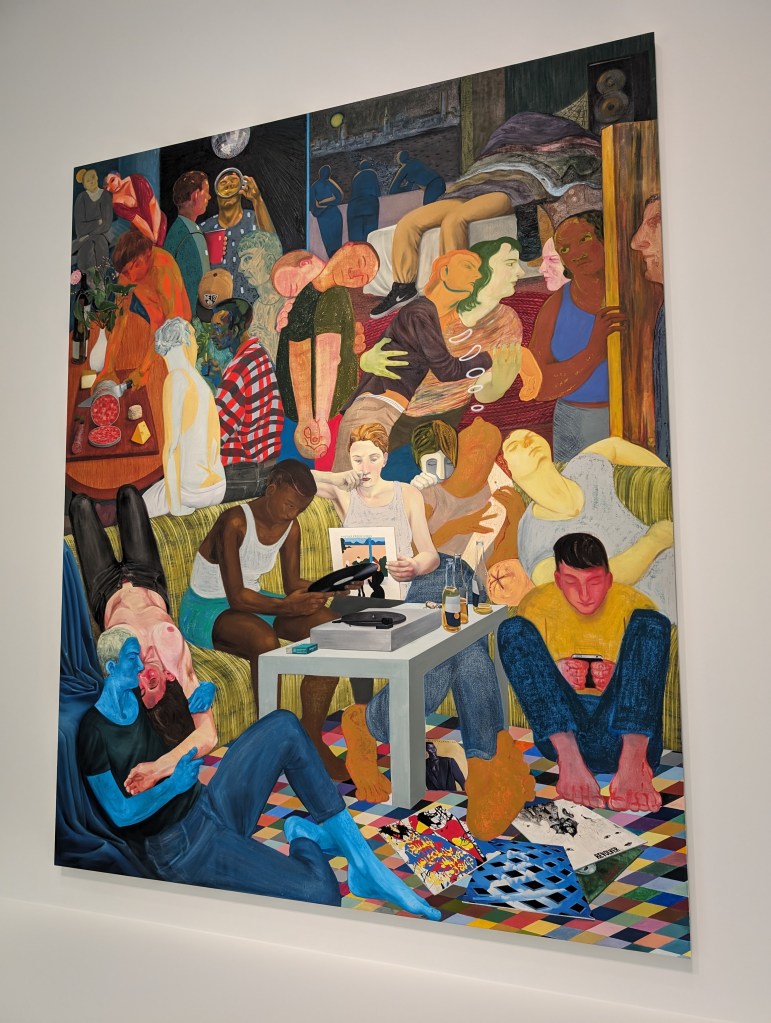
- Pallavi Sen, Dream Time; No Place Gallery – No Place Gallery has been the most consistently striking – for my tastes – gallery in Columbus for years and Pallavi Sen’s watercolors surging with overlapping patterns and an intriguing sense of repetition, was a highlight of everything I saw this year; I went back three times and never got it but loved sinking into these shapes.
- Joan Jonas, Good Night, Good Morning; MoMA, NYC – This was the finest example I’ve ever seen of translating performance art – especially the way documentation changed over the decades – into a formal museum space. Gargantuan, overwhelming rooms that conjured the power and intensity of Jonas’s work but also made room for intimate, punch-you-in-the-face direct interaction with these pieces.
- Various Artists, The Harlem Renaissance and Transatlatic Modernism; Metropolitan Museum, NYC – I’ve been enamored by The Harlem Renaissance since a middle school English teacher turned me into Langston Hughes and Zora Neale Hurston, but this exhibit took the visual arts component of that movement – artists I knew pretty well like Archibald Motley and James Van Der Zee, and so many who were outside of my radar – and connected it to the larger world in a way I spent hours in and could have spent twice as long.
- Melissa Zexter, Momento; Secret Studio – Secret Studio has turned me onto more of my favorite artists over the last few years than any other Columbus gallery. Melissa Zexter’s embroidered photography struck a nerve with me immediately while opening up an entire universe to me.
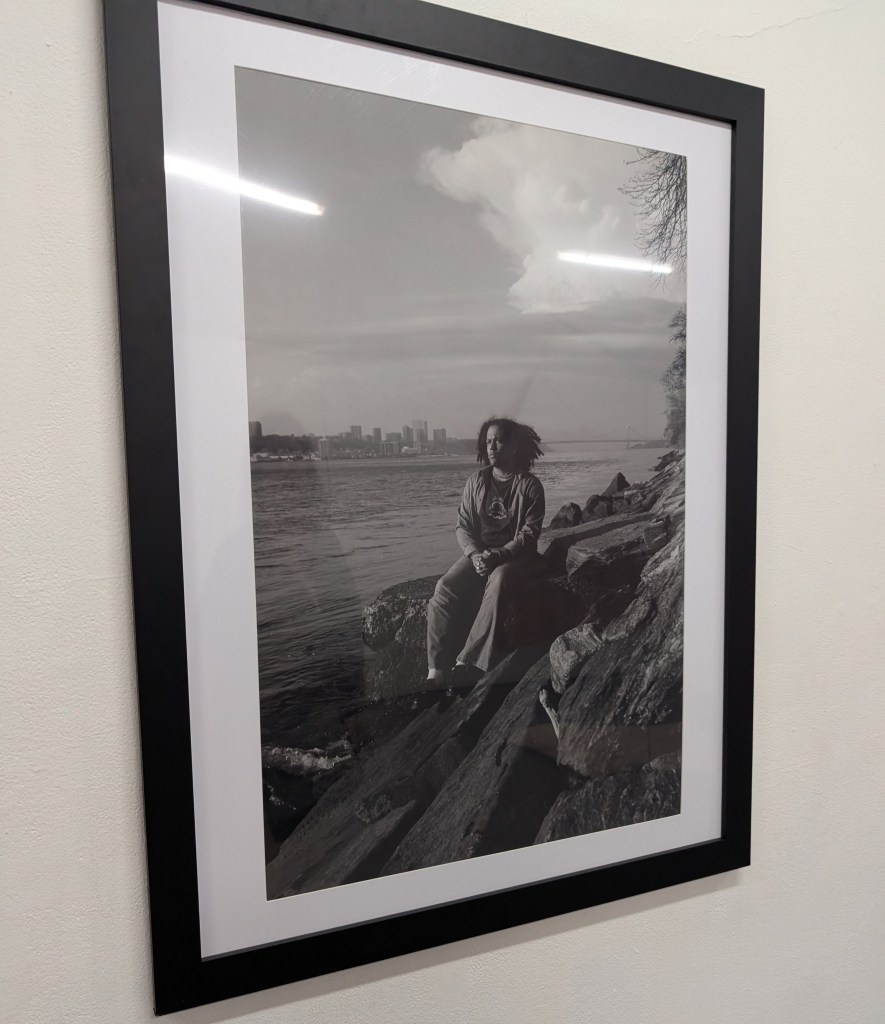
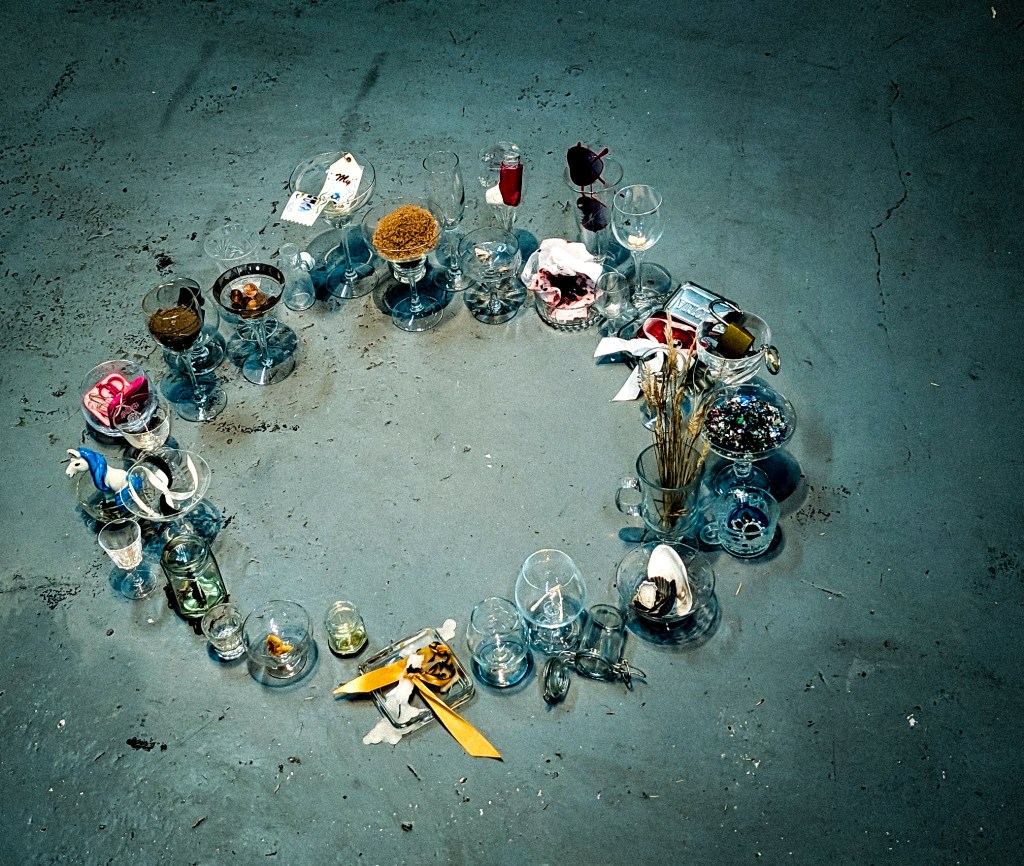
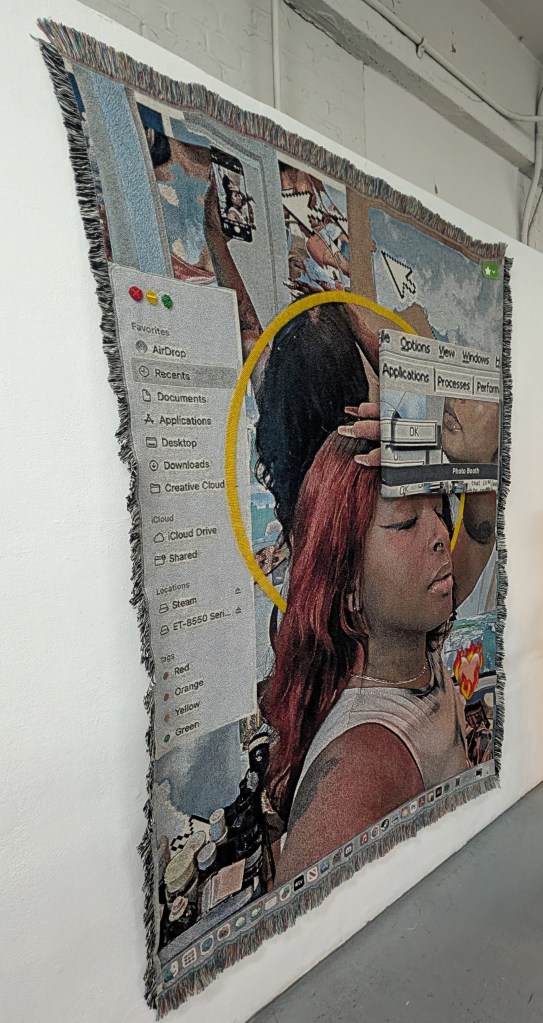
- Various Artists, Clouds Are So Beautiful That I Can Bite My Toes; Skylab – This group show curated by Amari-Grey was an exposure to younger artists I didn’t know before walking through that door with work that knocked me sideways individually but built power and beauty through the conversation among them. Ducking out of the – also great – street fair atmosphere below, celebrating the massive hanging art Current and with my favorite DJs The Coming Home spinning into something knottier, more ambiguous, but still a celebration of life, was a reminder of how crucial Skylab has been as a place, a reminder, as Sun Ra said, “There are other worlds they have not told you of; I wish to talk to you.”
- Ming Smith, August Moon and Transcendence at the Columbus Museum of Art; Wind Chime at the Wexner Center for the Arts; and Jazz Requiem – Notations in Blue at the Gund Gallery at Kenyon University – Having all three of these venues present Ming Smith (not born in Columbus but grew up here, not far from where I spent my childhood in the Hilltop) and showing different sides of her art was my single favorite visual art experience this year. The early trip to Africa juxtaposed against the stellar new installation at the Wex, the personally chest-cracking-open look at the Hilltop and the Ohio State Fair in 1989 in Transcendence, and the deep dive into Pittsburgh through the lens of August Wilson in August Moon at CMA, and the perfect conjuring of traveling and jazz icons, many of whom she knew personally, in these Bresson-y moments at the height of their power juxtaposed with the pause right before or right after being on stage at the Gund. This was probably one of the top ten experiences of my life, going through galleries and thinking about art. The kind of work that holds up just as much nerding out with people deep into their critical bag and taking my Mom and watching her be dazzled.
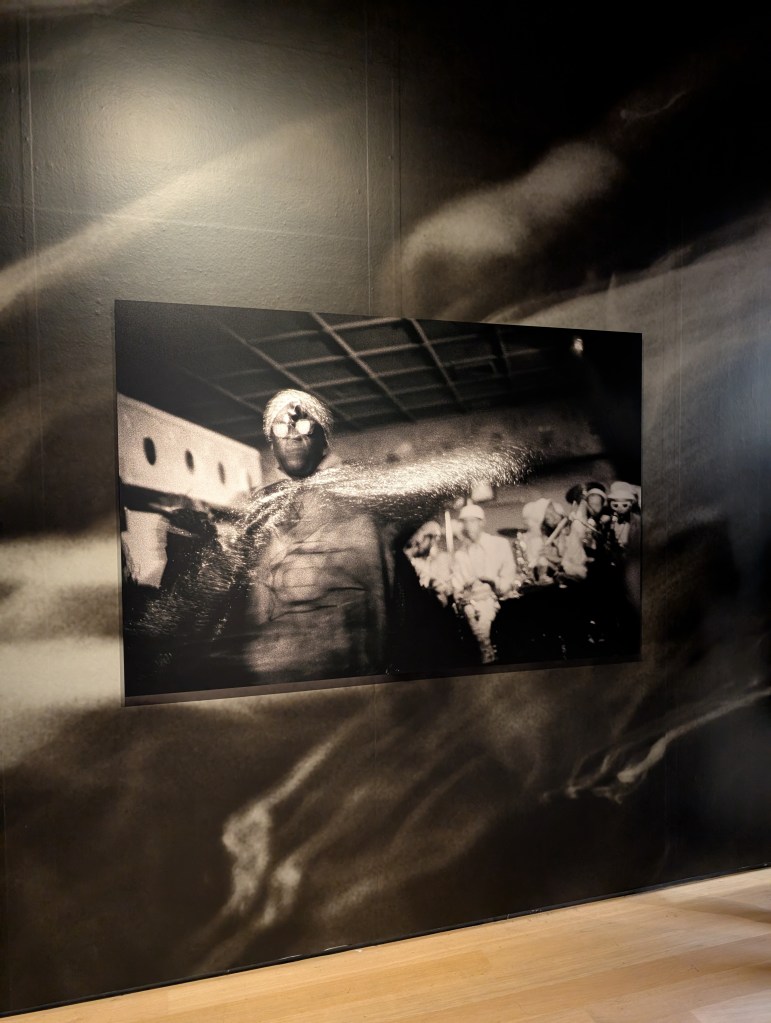
- Rotimi Fani-Kayode, Tranquility of Communion; Wexner Center for the Arts – Another photographer whose work I knew slightly but this broad yet hyper-focused look at his work, curated by Mark Sealy, the director of Autograph, the London space/collective Fani-Kayode co-founded, was an explosion of myth (in a larger sense and also self-mythologizing), desire, fury and beauty.
- Hannah Fitzgerald, There Are No Lies That Change the Version of You I Had; Urban Arts Space – Among my favorite parts of what Urban Arts Space has been bringing to town are artists I may have seen one piece of in a group show, and giving them a wider space to spread out. My favorite example of that this year – and there were several contenders – was Hannah Fitzgerald’s bodily, disorienting sculptures that recalled Louise Bourgeois, Paul Thek and Alina Szapocznikow, but with a completely unique feel and powerful point of view as they unpacked her relationship with her Mother.
- Andrea Morales, Roll Down Like Water; Brooks Museum, Memphis – The Brooks in Memphis always has something that makes me overjoyed I made a couple of hours for it whenever I’m in that city I love, and they outdid themselves with this magnificent show of photographer Morales, one of the best explanations of Movement Journalism I’ve ever walked through and one of the most beautiful examples of clear-eyed empathy. Every turn I made here hammered me in the sternum.
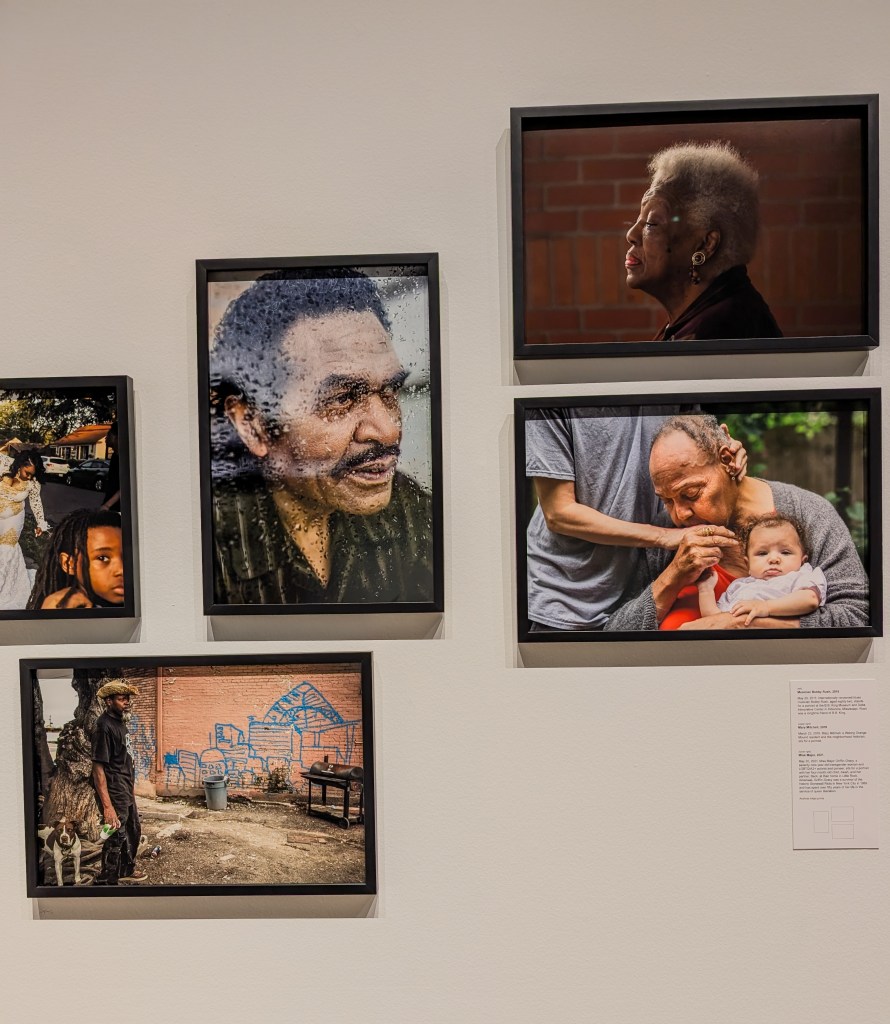
- Lester Julian Merriweather, Ana*Log; Crosstown Arts, Memphis – Another favorite spot in Memphis over the last several years is the Crosstown complex, the rare renovation of an older building (once an enormous Sears distribution center) that feels like it’s doing things right, including its art gallery, classrooms, public radio studio, and clinic. This first exposure to Merriweather’s canvases winked at Jack Whitten, one of my favorites who I’m surprised I don’t see more influence from throughout the art world, but in a contemporary and personal way. These collaged and gridded abstractions struck a deep chord in me.
- Cameron Granger, 9999; Queens Museum, NYC – I’ve been a fan of Cameron Granger for a few years – his show at No Place Gallery made my Best Of in 2022 and I still think about it and a film screening he set up at 934 Gallery last year, so I had to make it to the Queens Museum for his first solo museum show. This so far exceeded my expectations it left me floating through the park back to the train and – in a weekend I saw so much work that rocked me – may have been the finest thing I saw in those three New York days. The film at the center of the exhibit reminded me of the potential I saw in science fiction as as kid, to make metaphors real and force us to confront them, to explode our histories and our anxieties, and that only rarely delivers on.
- Elizabeth Catlett, A Black Revolutionary Artist and All That It Implies; Brooklyn Museum, NYC – An artist I’ve loved for a long time, this expanded my understanding of Catlett into other genres and media and (as was a theme for so much of the work that stuck with me over the course of this year) and a beautiful example of empathy that’s not mushy or soft-focused.
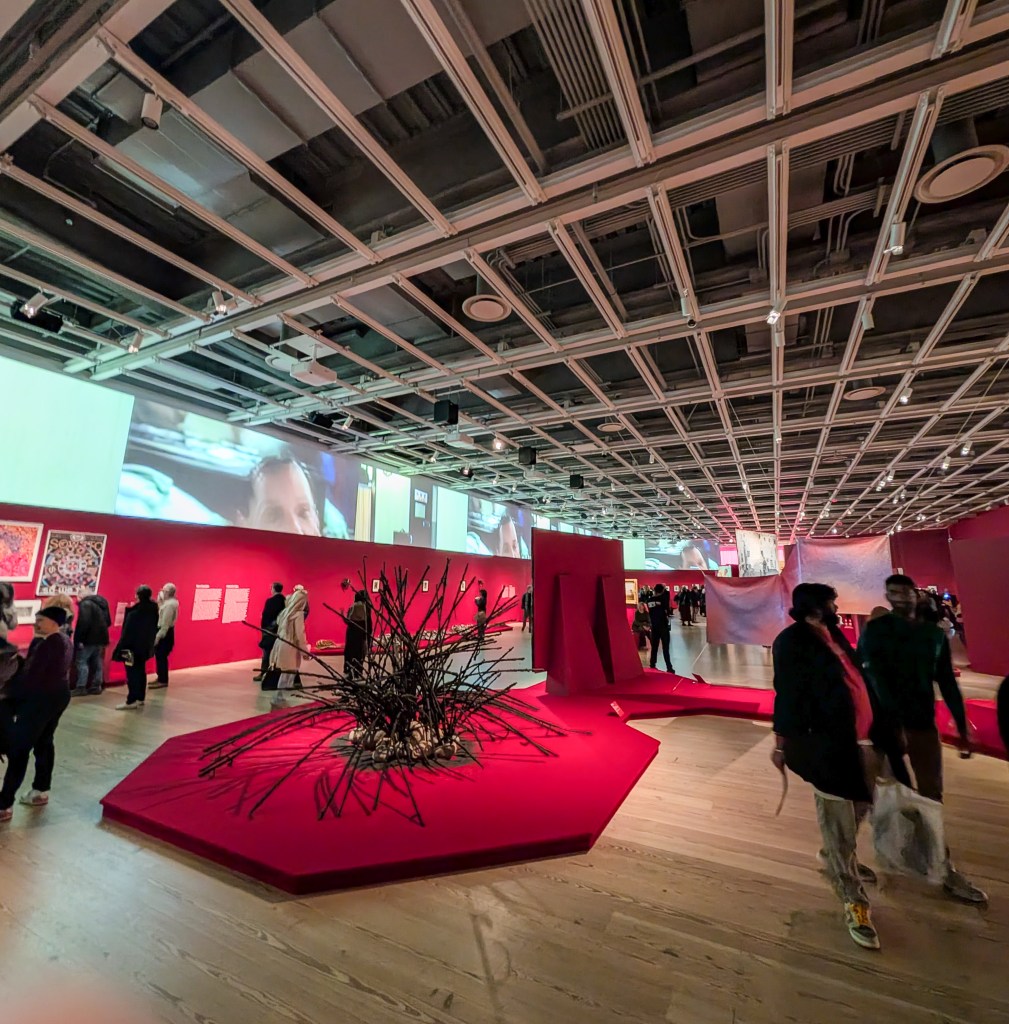
- Alvin Ailey and Various, Edges of Ailey; Whitney Museum, NYC – Alvin Ailey cast a long shadow over pop culture, not just dance, in a way only a few choreographers have, and this Whitney exhibit did an astonishing job putting him in context and dialogue with influences, peers, the social world of New York, and the AIDS crisis, in a joyous and painful explosion that highlighted the craft and struggle of the work and the power and ecstasy of being in this big gallery with one another.
- Various Artists, Luna Luna: Forgotten Fantasy; The Shed, NYC – Props to Anne for finding this, I only knew this recreation of Andre Heller’s Modern Art Carnival was displayed in New York. The best use of enormous art space The Shed I’ve ever seen, and a remarkable act of love in restoring these delightful pieces.

